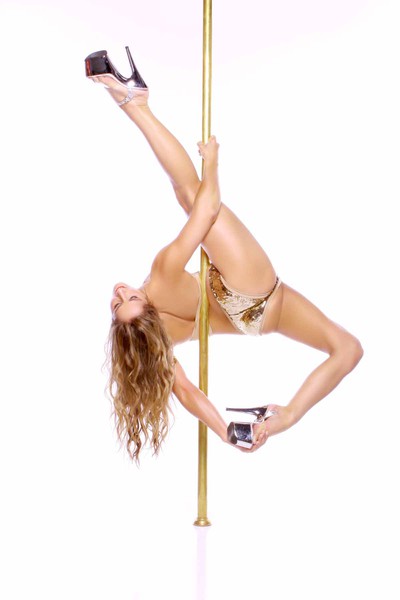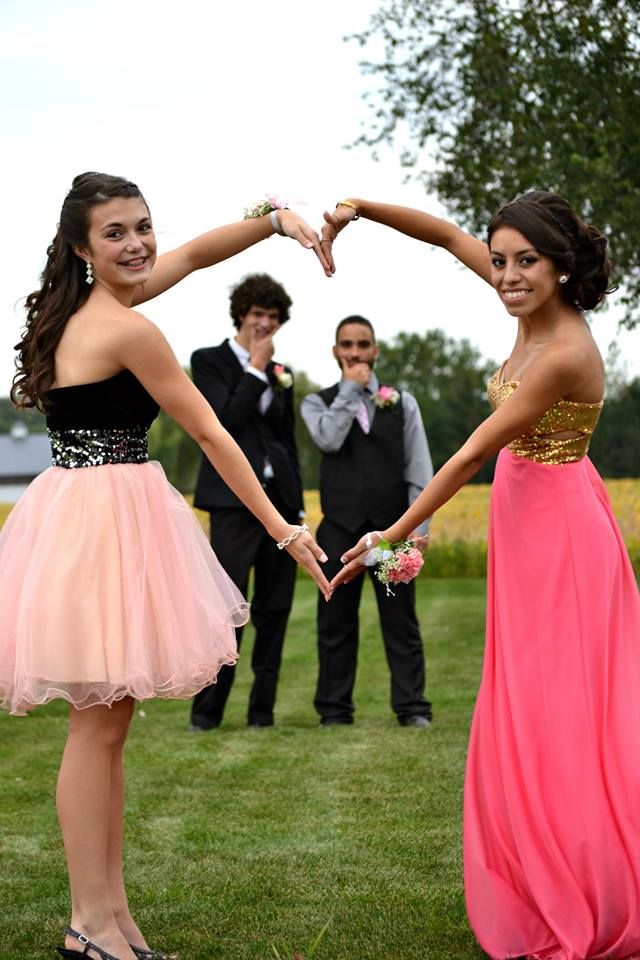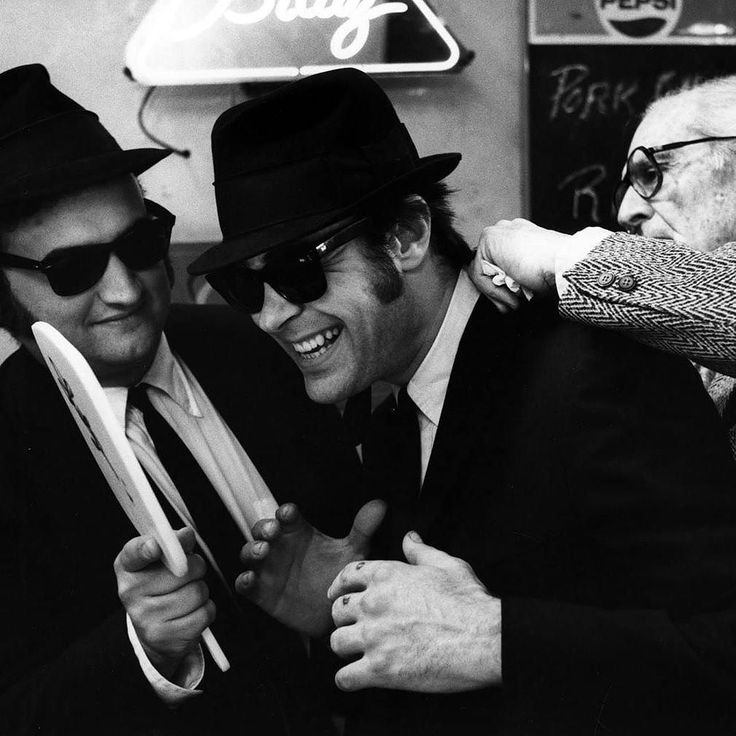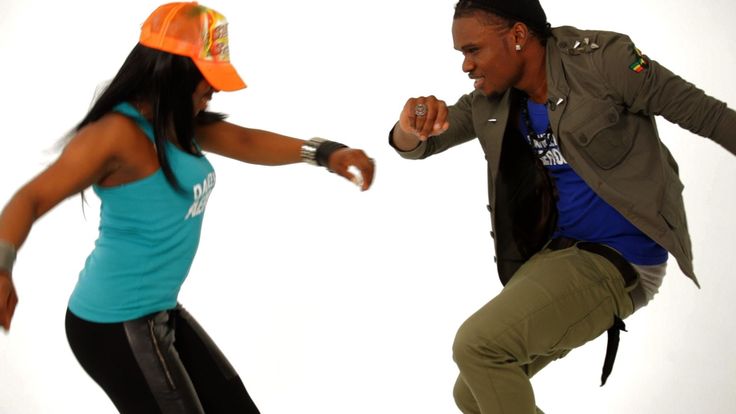How much do pole dancers make a week
How Much Do Pole Dancers Make?
If you’re wondering “how much do pole dancers make”, then you’re not the only one.
Pole dancing is more than just costumes and exotic dance moves. One of the key benefits of the industry is the money. For many, it’s an easy way to make a lot of money and can even provide financial security.
So, to peel back this layer of secrecy surrounding this perfectly respectable profession, this article is going to dive deep into the pay and the life of a pole dancer!
Contents
- How Much Do Pole Dancers Make?
- Pole Dancers’ vs Dancers’ Salary
- Salary Is Not the Only Income of Pole Dancers
- Freelance Teaching
- Offer Private Dancing Lessons (Open Private Studios)
- Become a Coach
- Make Your Own YouTube Channel, Tiktok or Website
- Become an Affiliate
- Publish Podcast
- What Affects a Pole Dancer’s Income?
- Working Experience
- Dance Skill
- Dancer’s Reputation
- Size of the Club/Bar
- Cities
- Stripper or Not
- Final Words
How Much Do Pole Dancers Make?
According to many sources, the average pole dancer makes around $44,161 and can go as high as $65,431 a year.
If you have a contract with clubs that requires you to perform a number of hours per week (or a set number of performances), then you can expect the payout to be between $75 to $100 an hour. However, according to many famous pole dancers on YouTube and Facebook, they recount having some days where they net up to $200 to $500 per hour!
But be warned, if you’re thinking about entering the industry, you probably won’t get such good rates right away (or possibly ever). On average, a pole dancing gig in the United States will net you around $20 to $35 an hour. It is still higher than minimum wage and can provide a liveable income, but the numbers aren’t as high as “success stories” online would lead you to believe.
Many factors can go into determining the salary of a pole dancer, ranging from the type of club, the skill of the dancer, and whether the dance is performed with clothes or not.
Pole Dancers’ vs Dancers’ Salary
Suppose you were to compare a pole dancer’s salary with a “normal” dancer.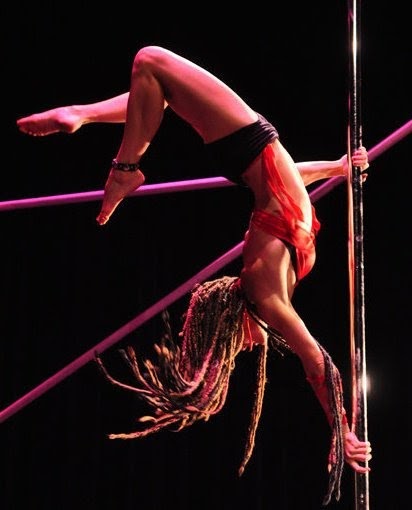 In that case, you will see why some people enter the industry immediately. According to one database, the average dancer only gets $20.13 an hour or $35,087 annually.
In that case, you will see why some people enter the industry immediately. According to one database, the average dancer only gets $20.13 an hour or $35,087 annually.
As for pole dancers, although the hourly rate is the same ($20,40), their annual incomes are significantly higher at an average of $59,496/year. This is because pole dancers receive bonuses, tips, and venue profit shares. Rarely do traditional-style dancers receive these extras.
Salary Is Not the Only Income of Pole Dancers
But clubs aren’t the only way for pole dancers to make money these days. There are many ways for pole dancers to boost their incomes. When you add them up, the true income of pole dancers can get surprisingly high.
Freelance Teaching
Pole dancing isn’t just an exotic dance that’s performed solely in clubs for the viewing pleasure of others. Being a high-intensity dance that engages the core muscles and arms, it’s an excellent sport for women to keep their bodies in shape and maintain their flexibility.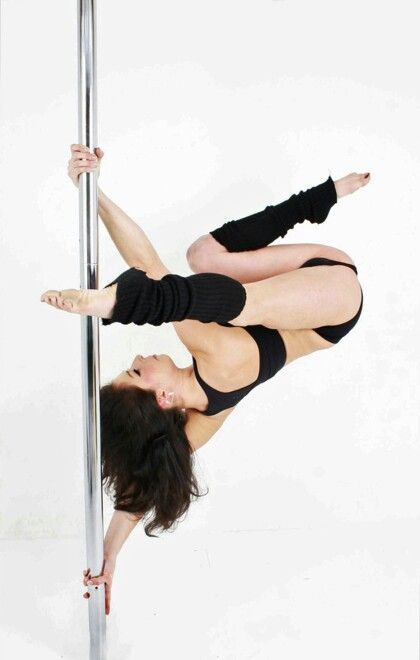
Don’t believe us? In 2017, the Global Association of International Sports Federation (GAISF) gave pole dancing the ‘Observer Status’. That means pole dancing is on the way to being legitimized as an Olympic sport!
It’s why pole dancing studios have been popping up everywhere. And these studios need instructors. Pole dancers can apply (usually on a freelance basis), instruct others on the art, and make good money while they’re at it.
Studios usually charge around $17 per session, and you’ll get a share of that.
Offer Private Dancing Lessons (Open Private Studios)
An alternative to teaching at dance studios is hosting your dance classes or opening private studios. This is much more profitable since you don’t have to share revenue with anyone else. You will also get the chance to spread your name around.
With the Internet, teaching a class 100% remotely without leaving your home is possible. In that case, the “costs” of running the business will be electricity, Internet, and maybe some marketing.
But if you want to go the extra mile, you can either use your home or hire a studio for a time to act as the classroom.
As for pay, $12 or $18 per session are perfectly reasonable.
Even if you were to take the lowest rate ($12) with one student for a month, three days a week, you’d still make $144. Size that up to a small class of 10, and you can easily make $1,440 a month in clean revenue.
If the business takes off, you may have a long-term business in hand once you’re finished performing!
Become a Coach
A pole dancing coach is usually a contracted position at a dance studio. It’s usually a lot more lucrative than freelance teaching positions. Although it’s a lot harder to get into since studios will only take up established, certified dancers as their in-house coaches, it’s worth looking into if you have the reps and the qualifications.
To be considered, you usually must go through a dance instructor course at a licensed dance studio and graduate there. The certifications can help you get your foot in the door and advance to the audition stage.
The certifications can help you get your foot in the door and advance to the audition stage.
A pole dance instructor makes roughly the same as a pole dancer ($20 an hour or around $40,970 a year). However, it’s a far more financially stable position. More importantly, you don’t necessarily have to exert yourself as you would as a dancer.
Make Your Own YouTube Channel, Tiktok or Website
The exotic dance industry has taken to the Internet like fish to water. Besides teaching, pole dancers can release their performances online, spread their name, and even make money through ads and sponsorships (YouTube or Tiktok) or subscriptions (OnlyFans).
Creating a YouTube channel or an OnlyFans is one of the most popular kinds of “side hustles” for pole dancers. It’s easy to set up, it’s free, and can be very profitable if done right.
@simonaspataro_ È di nuovo quel periodo dell’anno🧦#polechallenge#poledanceaosta #sport #poledancing #artist #poler #tiktokitalia #spin #fyp #aosta #fun #athlete ♬ Hard Liquor – SOHN
Become an Affiliate
Becoming an affiliate means recommending products and services related to pole dancing on your website or social media channels.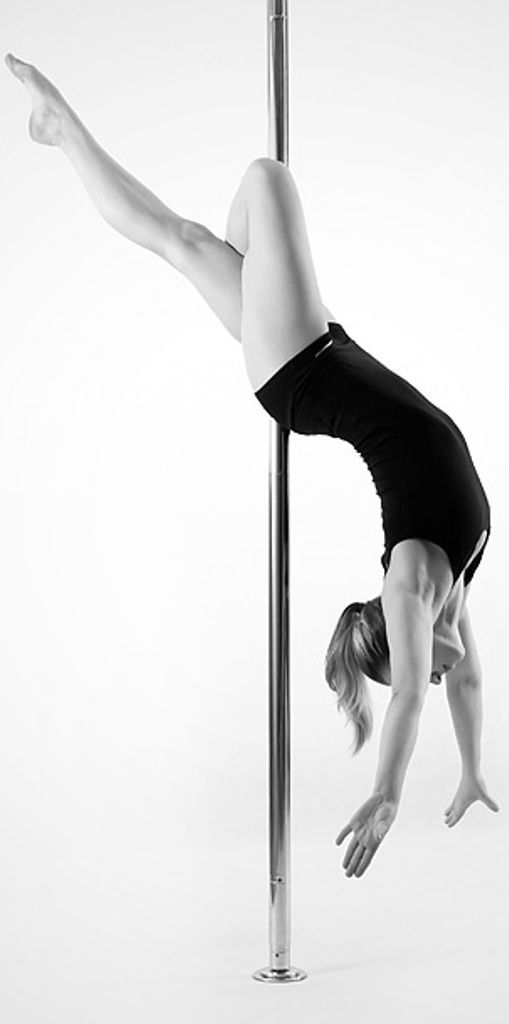 It’s basically running ads and marketing.
It’s basically running ads and marketing.
There are many affiliate programs that you can pick with commission rates ranging from 15% to as high as 75%.
While lucrative, you will need to have a large audience first to make much money out of this type of side hustle. The more people that buy the products or services you recommend, the more money you’re going to make.
Publish Podcast
Surprisingly, pole dancing is a pretty popular podcasting subject. Popular examples are “Pole Dancers Talk About Stuff” hosted by Teresa Rodriguez and Lana Morgana. These podcasts generally talk about pole dancing as a profession, the daily lives of pole dancers, and more.
If you feel like you have a knack for conversing with people and can whip up a good story, you can try podcasting. It can be a bit difficult to learn how to set up a podcast (audio editing, setting up accounts, and so on), but it can be worth it in the end!
What Affects a Pole Dancer’s Income?
Many factors affect the income of a pole dancer.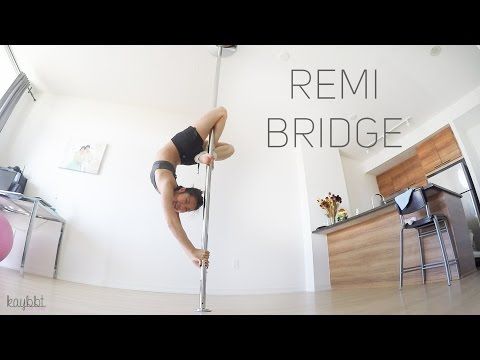 And, the effects can be positive or negative.
And, the effects can be positive or negative.
Working Experience
New dancers won’t make good rates right away. You will need to build your skill, and familiarity with the trade, as well as improve your name around the venues.
Beginner pole dancers can expect a rate of around $25 to $50 an hour. However, experienced pole dancers can earn up to $1,500 a night.
Dance Skill
Aside from working experience, the better and more attractive you dance, the more money you’re going to get in tips and bonuses. These are the bread and butter of the profession.
The only way to improve is to practice and improve your skill. That will, in turn, draw more high-paying customers.
Dancer’s Reputation
To have good rates as a pole dancer, you need to build your name. The more recognizable your name is, the higher the chance of people paying well for your performances.
Plus, if you were to become famous, you will have a higher chance of taking substantial incomes out of hustles like YouTube or teaching or famous Tiktok dancer, as well.
Size of the Club/Bar
Before you start signing up for gigs, scout around your local area and write down the names of all the clubs and bars that have pole dancing on the program list, first. Larger, more established clubs will usually pay better, so focus on getting as many gigs out of them as possible.
You can sign up for smaller gigs in the minor bars for some extra income, but don’t expect too much from them.
Cities
Different cities will offer different rates. For example, if you operate in Florida, you will only make around $16 an hour or around $41,487 a year according to one estimate. But if you were to move to baller cities like Las Vegas, you can earn significantly more.
Depending on the type of dancing that you do, the establishment, and the guests, it’s not unheard of to earn up to four-figure in a night.
But do note that even in Las Vegas, there’s a limit. Exotic dancers still have to work a lot to get any income. But a good night can mean $300 in the bank.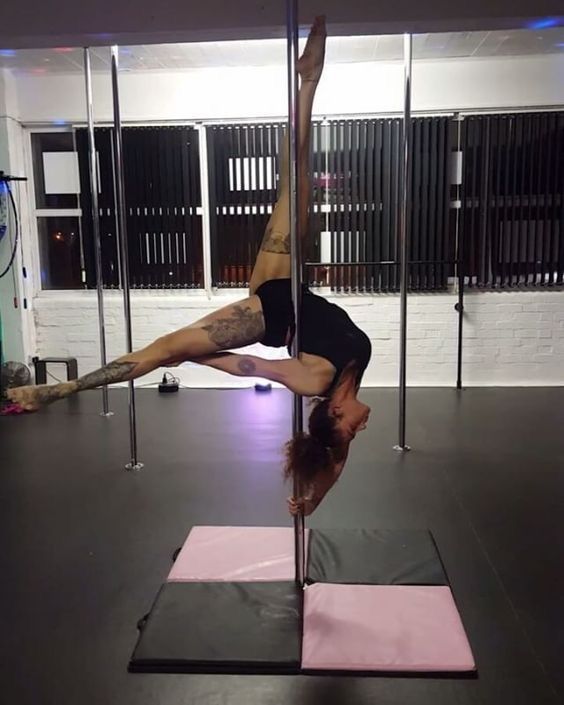
Stripper or Not
Stripping is the major differentiating factor between exotic dancers’ incomes.
Now, before we dive into this topic, it’s worth noting that stripping is entirely optional. If you do not want to do it, you should not force yourself to strip or allow anyone to peer-pressure you into it.
Stripping is dancing with some pieces of clothing off (usually the top), but there are all-nude clubs, too.
The dance is also a lot more sensual and personal, including lap dances and one-on-one dance sessions. And a lot of people can get the wrong idea because of this.
Usually, most strip clubs will employ a ‘No Touching’ rule, meaning the patrons aren’t allowed to touch the dancers under any circumstances. No matter how well they’re paying, if people were to touch the strip dancers, then it’s a quick way to be booted out of the club by bouncers.
Contrary to a lot of people’s beliefs, strip clubs aren’t brothels and function by entirely different rules. Clubs go the extra mile to ensure that non-appropriate touchings don’t happen because they can be held liable for assaults.
Clubs go the extra mile to ensure that non-appropriate touchings don’t happen because they can be held liable for assaults.
Final Words
Pole dancing is a well-paying, perfectly respectable profession in the entertainment industry despite the stigma surrounding it. If you’re thinking of joining, it can be a good way to make a career out of your exotic dancing skills.
To recap on the question of how much pole dancers make, then it’s usually between $40,000 to $65,000. You can make more depending on your skill, experience, and the side pole dancing jobs that you pick up along the way.
How Much Do Pole Dancers Make in 2022
For those of you who are considering taking up pole dancing as a profession, it’s always nice to get an idea of how much do pole dancers make.
Unfortunately, no EXACT data could be found on the internet. However, that doesn’t mean we can’t do the math ourselves!
We’ve done all the research and created this detailed guide based on what we learned to give you some idea of how much money you can expect to earn as a pole dancer in 2022.
How Much Do Pole Dancers Make an Hour
The average hourly wage for a pole dancer in the US is about $20 according to payscale. While the top 10% of earners make more than $30 an hour and the bottom 10% of earners make less than $10 an hour.
Of course, these are just averages – your actual earnings will depend on factors like your experience, geographic location, and the type of venue and place where you work.
How Much Do Pole Dancers Make a Day
The number of hours a pole dancer works and the rate that she is paid per hour determines how much money she makes in a day. Pole dancers typically work anywhere from six to eight hours a day, and the average rate for their services is usually twenty dollars an hour.
Also read: Best Songs for Pole Dancing
Now let’s do some math!
If they work for six hours, it is six times twenty, which equals 120 dollars. So pole dancers make anywhere around $120 – $160 a day.
*This does not take into account any of the tips that might receive or overtime hours worked.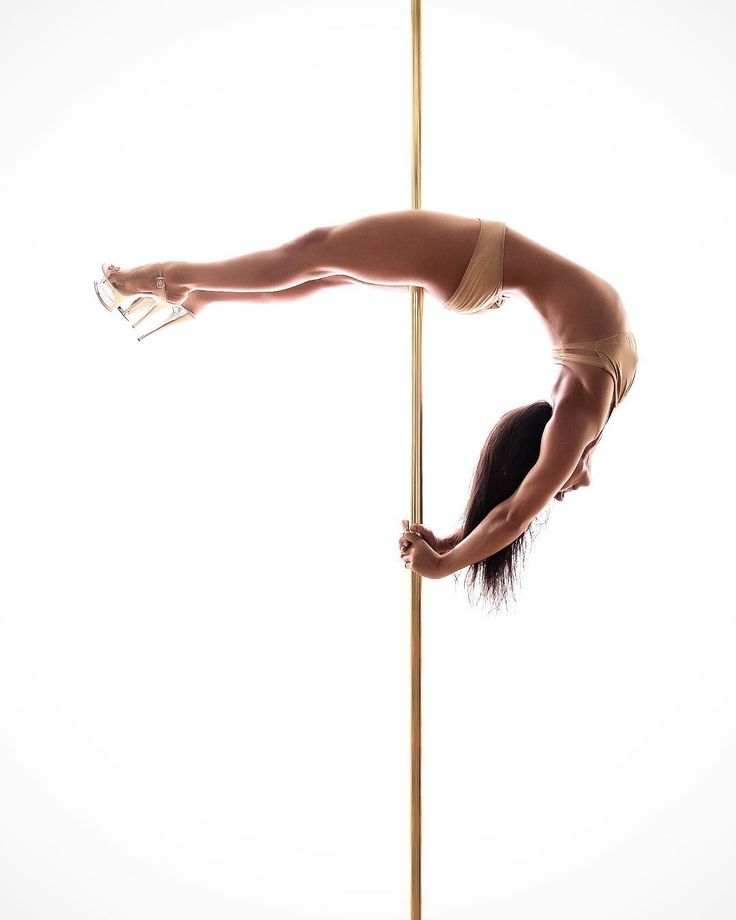
How Much Do Pole Dancers Make a Week
The total amount of money that a pole dancer makes in a week is determined by the number of days that she works and her daily wage.
An average pole dancer makes between $120 and $160 in a single day’s work.
If the pole dancer works 5 days a week, she has the potential to make around $600 – $800 a week.
On the other hand, if the dancer works all seven days of the week, she can expect to make somewhere in the range of $840 – $1120 a week.
How Much Do Pole Dancers Make a Month
How much a pole dancer makes a month depends on the number of days she works in a month and the amount that she is paid per day.
As we previously stated, a single day’s job can bring you anywhere between $120 and $160 for the typical pole dancer. So this multiplied by the number of days work should give you an monthly average.
If the dancer works 24 days, she can make around $2880 – $3840 a month.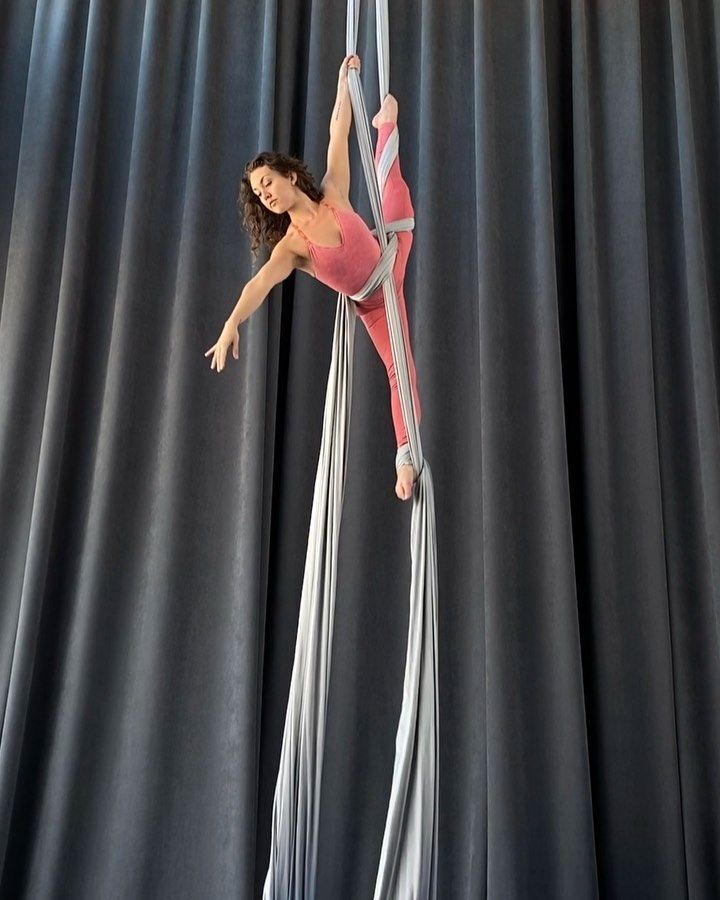 And if she works 26 days the pole dancer can make $3110 – $4160 a month.
And if she works 26 days the pole dancer can make $3110 – $4160 a month.
However, a highly experienced performer can make considerably more than that.
How Much Do Pole Dancers Make a Year
Assuming that you work for a total of 52 weeks per year will allow us to determine how much you will be paid annually (with 2 weeks of paid time off).
When working a job that requires a full-time commitment, you can expect to put in an average of 40 hours per week in the club.
2,080 hours of labor time in a year is equivalent to 40 hours per week times 52 weeks.
A yearly income of $41,600 is calculated by multiplying the hourly wage of $20 by the number of working hours in a year, which is 2,080.
Additional compensation may come in the form of bonuses, commission, tips, or a share of the profits.
Also read: Pole Tricks
Pole Dancer Salary Comparison Table
Here’s a quick break down of how much pole dancers make:
| $20 An Hour | Total Income |
| Yearly (262 work days) | $36,680 |
| Monthly (175 hours) | $3500 |
| Weekly (40 hours) | $800 |
| Daily (7 hours) | $140 |
Factors Determining The Average Salary of a Pole Dancer
To be able to determine what the average salary is, it is necessary to consider the location of the worker’s place of employment, their level of pleasantness, and their level of dance ability.
The following are some of the most important aspects that play a role in determining salary:
1. Type of Club or Bar
In general, clubs that have a larger number of customers will pay a better salary to their employees than clubs that have a smaller number of customers.
2. Number of Hours
The amount of money a dancer makes also depends on the number of hours she puts in during a shift.
When dancers put in fewer hours of work, they will inevitably bring in a lower income.
It is up to the dancers themselves to decide whether or not they wish to increase their earnings by working longer hours.
3. Working Experience
Even though dancers with no experience can earn roughly $50 per hour, experienced dancers have the potential to earn up to $1,500 per night.
4. Pole Dancing skills
Your ability to dance has a direct correlation to the amount of money you can make as a dancer.
Those dancers who can perform more complex tricks and spins earn more money than their peers who are unable to do so.
Dancers can improve their skills at pole dancing and increase their chances of landing high-paying clients by engaging in repeated, focused practice sessions.
5. The Size of the Club
The first thing you need to do to figure out what dancers make on average in your region is to learn the number of clubs that are located in your area.
Dancers who are employed by large clubs will make significantly more money than their counterparts who are employed by smaller clubs.
6. Promotions
Earning potential for dancers is also increased by participating in promotional events.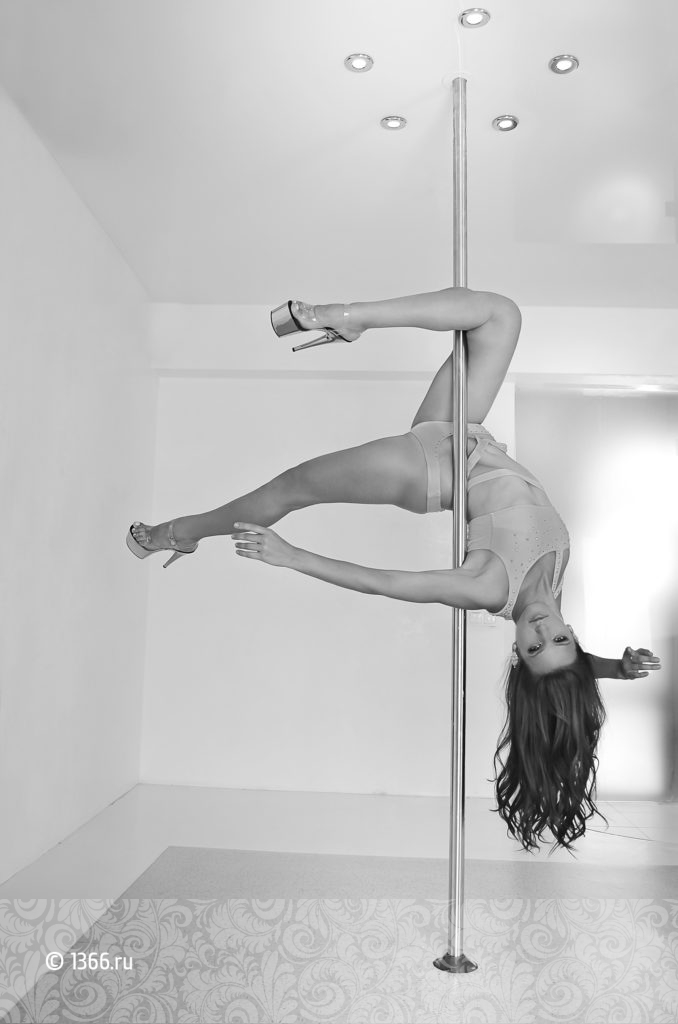
Increasing your profile through activities such as contests and guest appearances can significantly boost your earning potential.
7. Season
The wedding season, which occurs during the summer and spring, brings substantial sums of money to business-oriented pole dancers.
Average pole dancers can make it on a few hundred dollars, but the wedding season can bring in much more.
A pole dancer’s earnings might be increased by performing at multiple bachelor and bachelorette parties.
How Much Do Pole Dancers Make a Year in the UK?The average income of a pole dancer in the United Kingdom is £29,250 per year, which is equivalent to £15 per hour. The starting salary for an entry-level role is £25,350 per year, while professionals with more experience can earn up to £37,500 annually.
Can I Pole Dance Without Being a Stripper?
You certainly do not need to be a stripper to pole dance. Acrobatic tricks and motions that utilize a pole are required for pole dancing; nevertheless, pole dancing does not need stripping or other erotic movements.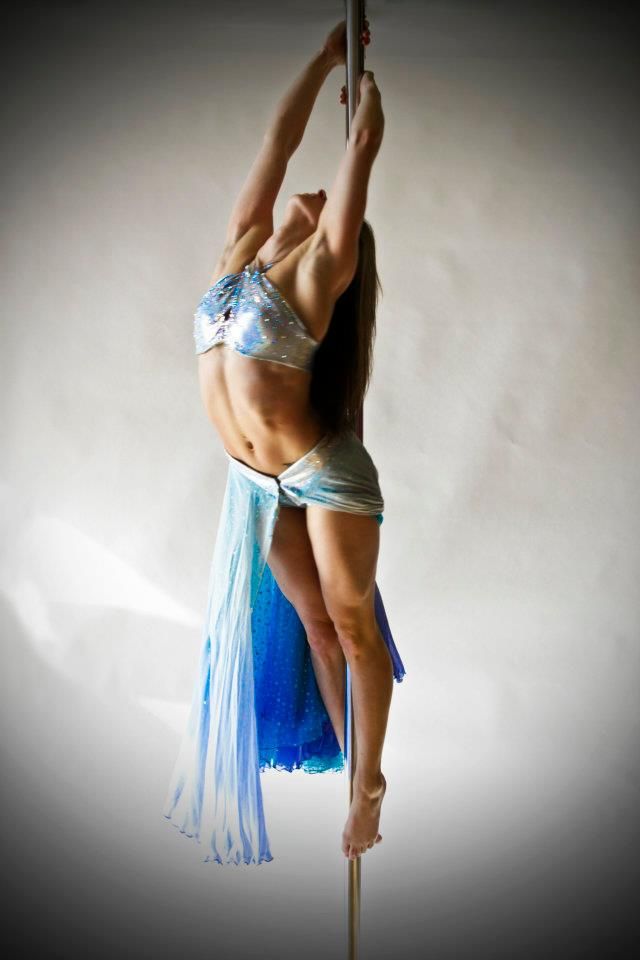
How to get started in pole dance
Irina Malchukova
opened a pole dance studio
Author profile
I taught pole dance for six years, five of which I ran my own pole dance studio.
To do this, I completed two special courses and participated in several master classes, my productions won prizes in regional competitions more than once.
I'll tell you how to start practicing for a beginner, what to buy, why half-dance can replace fitness and how to choose the right pole dancing studio.
What is pole dance
Pole dance is a pole dance that combines elements of choreography, gymnastics and acrobatics. In fact, this is a general concept. Now there are several directions that differ from each other: Exotic Pole Dance, Pole Art and Pole Sport. I will tell about them further.
Pylon, or pole, a polished metal tube for grasping with hands and clutching with legs or other parts of the body.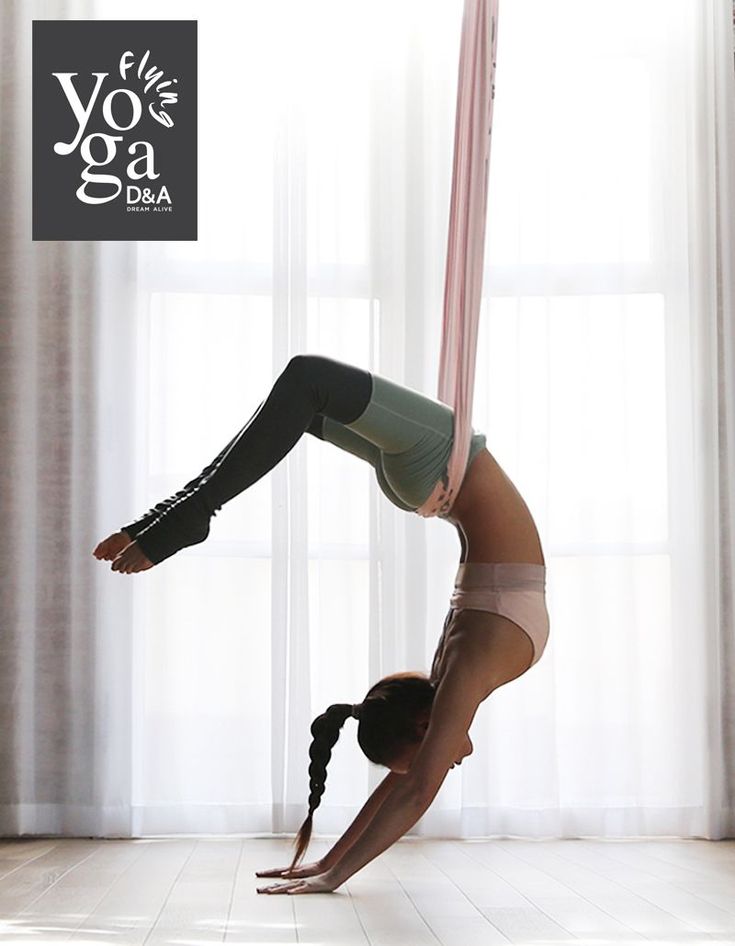 Its diameter can be 40, 42 and 44 mm.
Its diameter can be 40, 42 and 44 mm.
/motivation-sports/
Work out with a trainer and try different activities: 7 tips to love the sport
Usually made of stainless steel, this ensures a smooth glide and at the same time a good grip on the skin. Pole dancers don't like it when a pole is called a pole.
There are static poles - about tricks that are performed on such a pole, they say "in static", and also rotating ones - dancers say "in dynamics". In what follows, I will use these concepts.
Most often, poles in professional studios have two modes at once. Due to simple manipulation, "dynamics" turns into "statics". In competition, dancers must be able to do tricks on both static and rotating pylons.
These are poles, or pylons - such were in my studio. I twisted the pylon from dynamics to static with the help of a key. Photographer: Vyacheslav RuchkinPylons are fixed in different ways:
- Widespread between floor and ceiling.
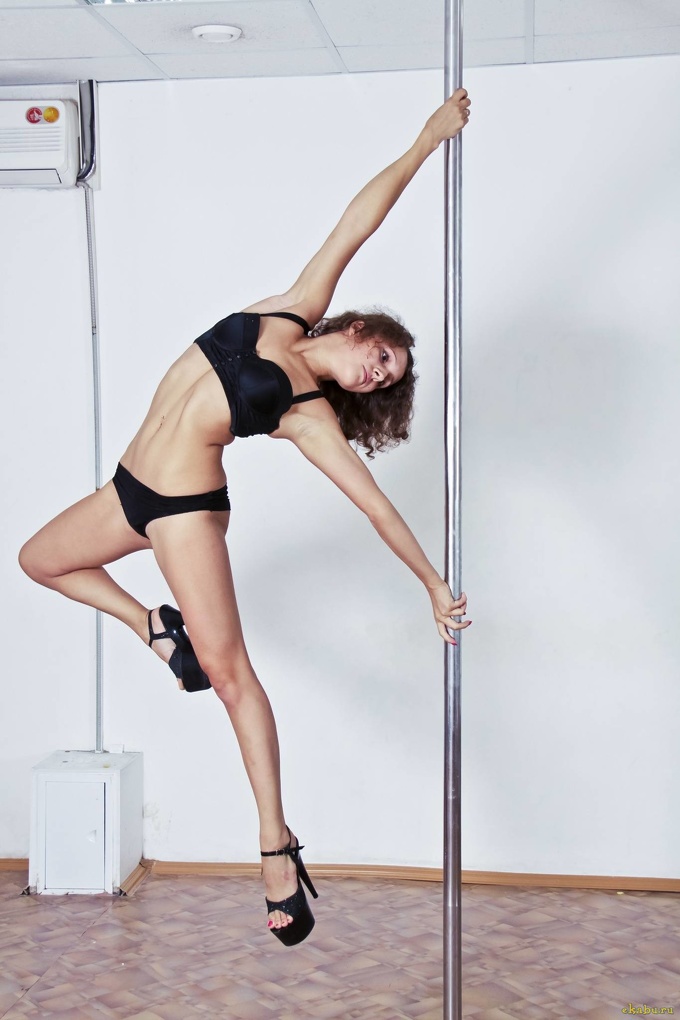
- With one fixed fixing to the floor or ceiling only.
- Two fixed fasteners at once. This option is the most reliable.
One fixed mount in studios is also acceptable. If the pole is installed only at a distance in a dance school, I do not recommend doing complex tricks there or spinning strongly.
There are also portable pylons - these are structures that can be transported with you or quickly assembled on site. Usually they are used for performances, since it is not safe for students to study on them in a constant stream.
Pylon supports that are fixed to the floor and ceiling. Source: Pilonexpert Portable pylon. Source: thepole.euelements are called tricks that are done on a pole. There are several levels of the pylon where they are performed:
- Upper - acrobatic stunts are performed here at a height of more than two meters above the floor.
- Medium - perform rotations, plastic or dynamic elements at a height of 1-1.
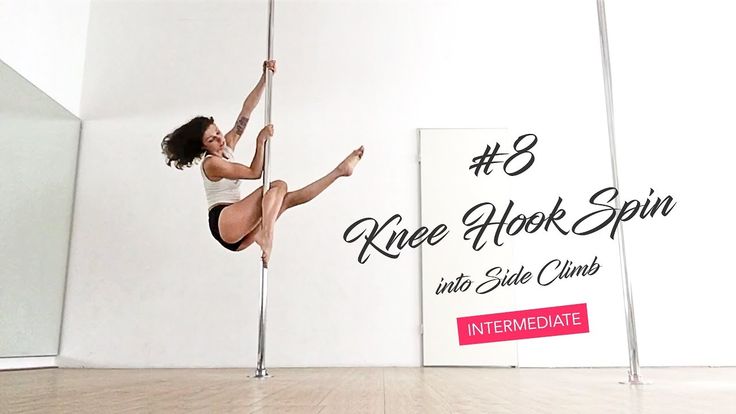 5 meters above the floor.
5 meters above the floor. - The lower one is the stalls. Usually this is plastic or acrobatics, which is performed both with and without a pylon.
In 2021, pole sport was officially recognized in Russia. This means that the Ministry of Sports of the Russian Federation will coordinate all the rules by which half-dance competitions are held, there will be sports categories for participants, judges will have to undergo certification, and half-dance federations will have to be accredited.
Order of the Ministry of Sports of the Russian Federation, in which half-dance was included in the register of sports
Dance schools offer half-dance classes not as a sports discipline, but as exercises for stretching, working out the muscles of the legs and arms.
| These are elements on the pylon, or tricks |
Half-dance directions
Pole Sport or Fitness In this direction, most of the time is devoted to trick and power elements on the pylon.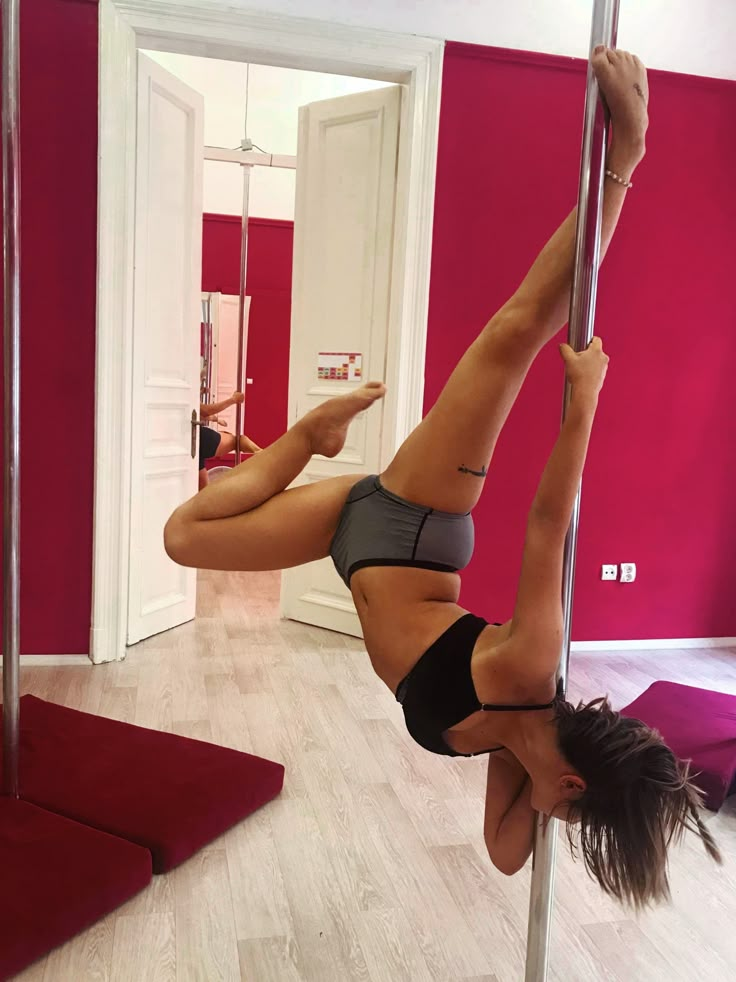 There are about 70% of tricks in the performance, and 30% of the choreographic or parterre part. To simplify, half-sport is similar to gymnastics.
There are about 70% of tricks in the performance, and 30% of the choreographic or parterre part. To simplify, half-sport is similar to gymnastics.
Competitions are often held in this direction. Mandatory elements are defined for them - those that a dancer must be able to do and show at the competition. Each element is evaluated by points: they look at the purity of execution, clarity of lines, and other criteria. Sometimes there are restrictions on touching the floor during a performance.
Pole-sport is most similar to artistic gymnasticsPole dance directions
Exotic Pole Dance This is a dance direction where the emphasis is on choreography, plasticity and musicality. Exotic is danced in special shoes - strips, they have a high platform and heels. This is the most feminine direction. If compared with others, we can say that exotic is strip plastic with a pylon, where there is a trick part.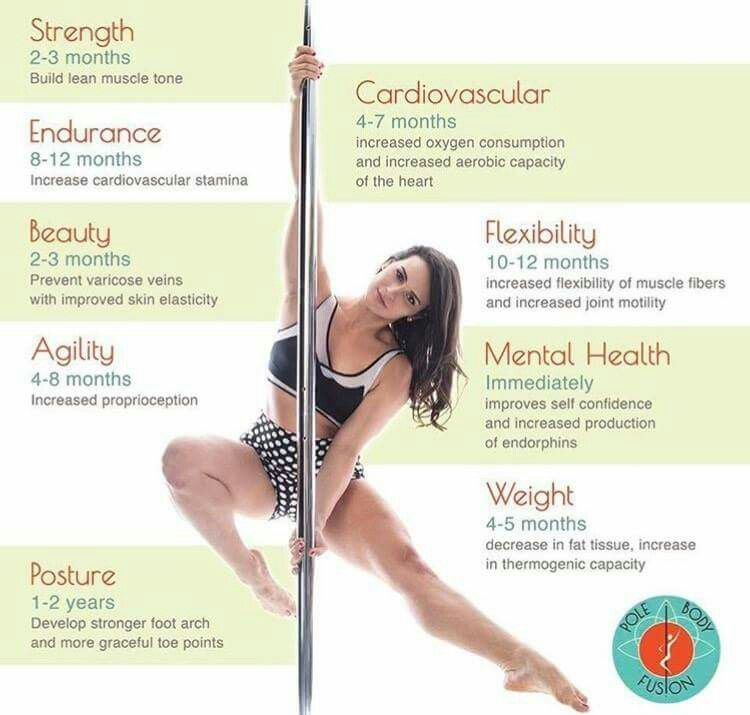
Important: in exotic pol-dance one does not completely undress. You can take off some item of clothing in the room - gloves, a neckerchief, ears from your head. But it is forbidden to expose the genitals or breasts.
This is what special shoes for exotics look like - strips. Photographer: Sergey PatrushevExotic pole dance is also divided into several types.
Exotic Flow features smooth and slow movements. The ratio of tricks and choreography is about 20/80. It does not require complex elements, but acrobatic stunts are more like dance accents. The main thing in this type of dance is the choreography at the pylon and the parterre technique at the very bottom.
Smooth slow dancing exotic flowExotic Hard - more energetic and sharp dance. The ratio of trick and choreographic parts is 70/30.
The main thing here is the ability to perform acrobatic elements on the pole in strips. The image and idea of the dance are also important.
The image and idea of the dance are also important.
Old School is the most sensual and feminine direction. The ratio of tricks and choreography is 40/60.
Particular attention is paid to musicality, dance elements, and tricks are chosen as smooth as possible.
Sensual old school directionPole dance direction
Pole ArtThis is a harmonious combination of power elements and choreography, that is, 50% dances, 50% tricks. Artistry and presentation are important here. For example, sometimes they dance a modern stage dance, only with a pylon. At pol-art competitions, revealing and defiant clothing, sexual movements are prohibited.
The main difference between half-art and exotic is that it is not a seductive dance that shows sensuality and femininity.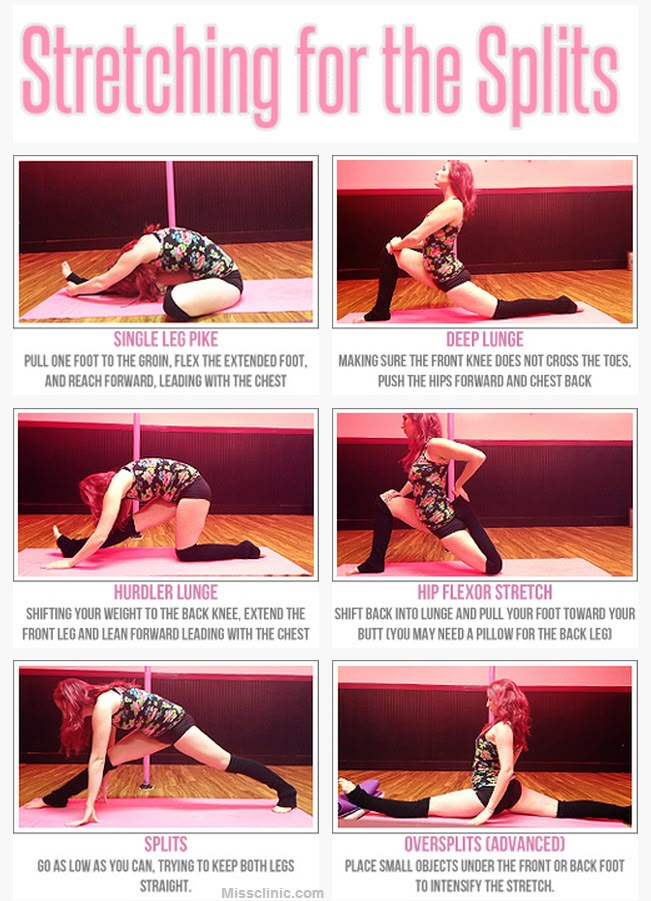 Half-art is danced not in strips, but barefoot or in special shoes, the clothes are strict, not sexy, there are no playful movements or coquetry with the audience. If in exotic the task is to seduce the viewer, then in half-art it is to tell a story, show the emotions and experiences of the hero.
Half-art is danced not in strips, but barefoot or in special shoes, the clothes are strict, not sexy, there are no playful movements or coquetry with the audience. If in exotic the task is to seduce the viewer, then in half-art it is to tell a story, show the emotions and experiences of the hero.
All directions of half-dance are intertwined with each other. It will not be possible to dance exotic or art without tricks, so the basic elements of half-sport will have to be mastered. At the same time, staging a half-sport number will not do without choreography.
I recommend combining two directions: trick part and dance part.
Pole art is reminiscent of stage dancingHow pole dance can be useful
Half dance seems to be easy because the dancers' movements are light. In fact, you need endurance, flexibility, coordination.
Calorie consumption calculator for half-dance classes
One session actually replaces a circuit training, where exercises for different muscle groups are repeated several times - the same number of calories can be spent.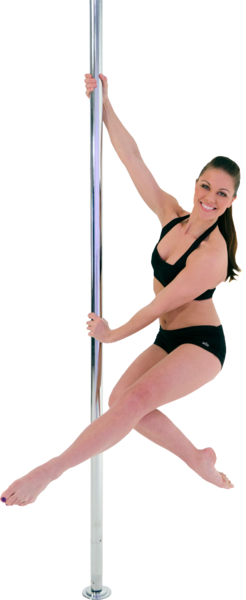
In addition, pole exercises train the skill of controlling the whole body. You need to be able to keep yourself on your hands, on your feet, to maintain balance in static. Different muscles work, over time the body becomes toned. Due to twists on a rotating pylon, the vestibular apparatus is trained.
Abs and back. Many tricks must be done statically. For example, handstands. In this case, all the stabilizing muscles are involved, the press and back work, the ligaments are strengthened, strong core muscles are formed.
/list/sports-myths/
“We need to close the carbohydrate window” and 9 more common myths about sports and health
Upper body. Use your hands to climb the pylon and hold your own weight. Shoulders, biceps and triceps, pectoralis major and other chest muscles, upper back work.
Lower body also works. For example, there are hangings on the legs - if you do not strain your leg muscles, you can fall off the pylon. Body weight must be maintained with the help of the muscles of the thigh and calves, gluteal muscles. Some entry-level twists work the upper thighs, glutes, and lower back at the same time.
Body weight must be maintained with the help of the muscles of the thigh and calves, gluteal muscles. Some entry-level twists work the upper thighs, glutes, and lower back at the same time.
Stretch - there are beautiful elements that require stretching the legs and a flexible back. I recommend attending stretching classes separately. If this is not possible, performing tricks on the pylon will eventually develop plasticity anyway.
In addition, tricks must be constantly practiced - this requires stamina.
I will also note: many people gain self-confidence, because each mastered trick is a small victory.
Who suits half-dance
The most difficult thing is to decide to come to the first lesson. Popular newbie fears:
- I can't do it;
- everyone already knows how, but I don't know anything;
- I don't have enough strength, I won't lift myself onto the pylon;
- I don't have the ear to dance;
- I am overweight;
- everyone has splits, but I don't have a stretch.
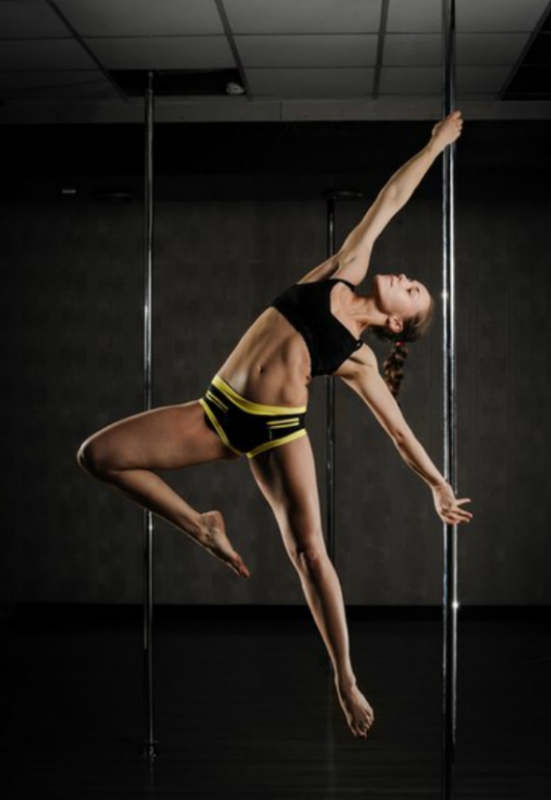
In fact, everything is not so difficult. You can start from scratch without any preparation.
/fitness/
How to save money on sports
Even if a person was a professional athlete or dancer, he too may fail at the first training session. And this is absolutely normal, because pole exercises are a special load: the work of the whole body, coordination, grip due to the skin.
Usually students are divided into groups of beginners and those who have been studying for a long time. This is done for convenience: everyone works out the same tricks, can see each other's mistakes or direct a neighbor on the pylon in the right direction. Beginners can safely join groups of beginners: they are not far behind in the program and will quickly catch up with their level.
I note that the pole is an amazing thing: at the very first training, a person understands whether it is him or not. In six years, I have never met a person who quit half-dance after three, five, ten classes.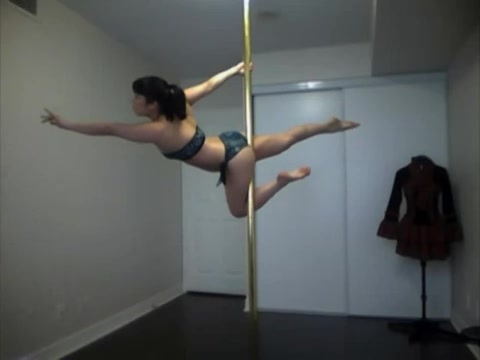 Usually a student lights up and stays for a long time, or realizes that he is interested in another sport, and is no longer interested in half-dance.
Usually a student lights up and stays for a long time, or realizes that he is interested in another sport, and is no longer interested in half-dance.
Development is gradual. First you start to hold on to the pylon, then you know how to spin and climb it correctly, and then a whole world of tricks and combinations opens up. I want to do and try everything, capture it in a photo or show it in a dance number. I would say that the excitement turns on: can I do it. It moves forward, so classes are rarely abandoned.
But half-dance is hard. You have to work on yourself, laziness, fears and pain. Sometimes you have to work out the same element twenty, thirty, forty times - this can get boring and exhausting. You really need to catch fire and be hardy - without this, nothing will work. Sometimes you have to wait a long time for results - both in tricks and in terms of physical form.
Dance studios often hold open lessons or give the first lesson for free. It is better to use this opportunity to try half-dance and understand whether you like it or not.
How is the half-dance class
Warm-up. At the beginning of each lesson, regardless of direction, 10-15 minutes - warm-up from head to toe.
If the student is late, he warms up on his own or is not allowed to the lesson. Without warming up the muscles, you can get injured - this part of the workout is mandatory. In semi-sports, attention is paid to the joints, and in exotics, they can include light basic dance elements: various waves, hip and chest rotations.
Main part. After the warm-up, the main part comes: in exotic or art, they learn the movements and the connections between them or repeat what they learned earlier. As a rule, it takes from three to six lessons to practice the dance, and from two to four, depending on the complexity, to practice the dance.
/stretching/
How I Became a Stretching Instructor
In a semi-sport, the lesson is different: the trainer explains and shows the trick that needs to be mastered and done. Up to two people can practice on one pylon. If more, the students are already uncomfortable: they will not have time to fix the element.
Up to two people can practice on one pylon. If more, the students are already uncomfortable: they will not have time to fix the element.
Periodically repeat old tricks or spins. This shows progress well: you can compare how the element was done before and how it is done now. If the student already knows several tricks, the coach comes up with combinations - when you go from one element to another.
Learning goes from simple to complex. For example, at first there will be simple elements like a “barrel” - they are needed so that the student gets used to the grip with his hands and steps over the fear that he will fall from the pole.
At the first lesson, it seems that you are not holding on and constantly slipping, this is normal. Then the hands get used to it, stop sweating, there is strength in the muscles and self-confidence.
For half-sports, there is an example program for students to learn tricks. Of course, everyone goes at their own pace, but after a month or two you need to be able to do the simplest grips, for example, hanging on the far and near leg, on the elbows.
Every studio must have safety mats: you learn to perform complex tricks only with them. But beginners are also offered to take a mat so as not to get injured.
There is always alcohol or vodka and a rag in the studio - this is necessary to degrease the pylons, otherwise there will be no adhesion. Students can also use talcum powder or powder that dries their hands or feet so that they do not slip on the pole and do not roll off it. There are also other means for this, such as magnesia.
I don't recommend using talcum powder or anything else, otherwise your hands and feet won't get used to the grip - it's better to learn how to hold on right away without traction aids. Moreover, it is forbidden to use them at half-dance competitions.
Cooldown may vary between dance studios. Usually, after the dance part of the exotic, there is a slight stretch, and in half-dance they finish off the muscles: they pump the press, sometimes with a pylon, do push-ups, stand in the plank.
How are performances and pole dance competitions
Reporting concerts. Each studio holds reporting concerts, in which everyone can participate. Coaches prepare group numbers - not only dance, but also stunts, as well as solo performances when a person performs alone.
As a rule, they start preparing for the reporter in advance - several months in advance. Sometimes concerts are held not in the studio, but in a cafe, restaurant, or even in the Palace of Culture. These are bright events in the life of students - their relatives and friends come to support them, and the dancers receive applause and a sense of the stage.
Reporting concert of my former studio. Photographer: Sergey PatrushevCompetitions. They are held in all directions of half-dance.
In half-sport, you need to show combinations of tricks that are included in the mandatory program. They must be performed on two pylons: static and rotating. There must be a dance part, but it rather fills in the gaps between the tricks.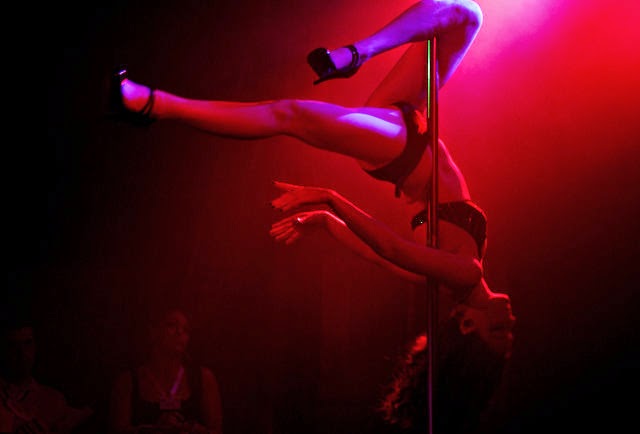
Participants usually qualify for local city competitions or video selection. Competitions are easy to find: you can simply google or search for groups of competitions in social networks. The coaches themselves also follow the latest information and invite students to participate. Anyone can apply for the competition.
/spravka-dlya-sorevnovaniy/
How to apply for a certificate for participation in competitions
There are several categories: beginners, intermediate level, pros, children, duets, group performances. Well-known coaches and dancers are invited to the jury. All participants receive certificates or diplomas for participation, and the winners receive medals and prizes.
In exotic there is no obligatory condition to dance with two poles, the dancer can choose the pole mode independently. But you can only perform in strips - the jury evaluates how well the dancer knows how to use shoes. There are also categories here, and sometimes participants are divided into areas: old school, flow and hard.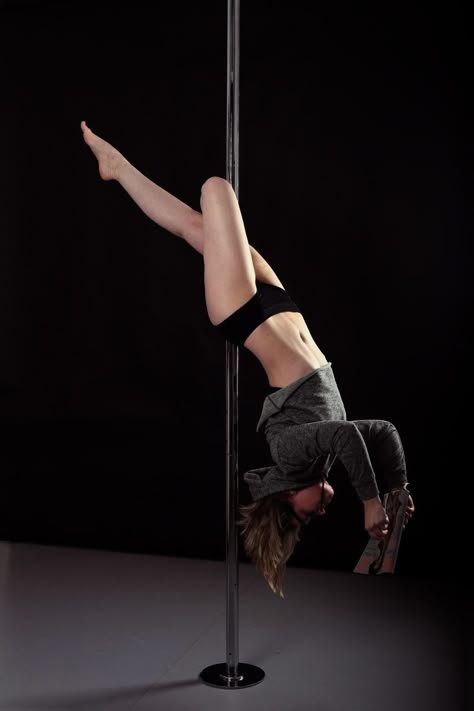
As part of the competition, invited jury members often give master classes and hold demonstration performances.
Preparation for the competition takes at least three months. With pole-sports, the most difficult thing is to wait until the pole-dance organization hosting the competition releases a list of required elements, and then choose the required number of them. Each element is worth a certain point. Therefore, the dancer collects the maximum number of points from the elements that he can do.
In addition, you must perform all the tricks according to the requirements: hold out for a specific number of seconds, enter and exit the element correctly, observe lines or corners. If the participant fell, did not get the trick right the first time, slightly slipped from the desired position along the pylon, or did not hold out for the required number of seconds, he receives a penalty.
The jury also evaluates the choreography, artistry, image, presentation. For example, you can’t sing along during a performance or look at the floor. If something went wrong and the participant left the stage during the performance, his candidacy is removed.
For example, you can’t sing along during a performance or look at the floor. If something went wrong and the participant left the stage during the performance, his candidacy is removed.
Competitors in semi-sports have strict appearance requirements: a swimsuit or shorts must be of a specific length, hair must be tied up, make-up is not bright. If a participant has underwear visible, he receives a fine for this.
Such stringent requirements are due to the fact that half-sport federations have been fighting for a long time to be included in the list of Olympic sports - and in 2021 it happened.
Exotic competition rules are not so strict, preparation for them is easier. But even here there are requirements: to do a certain number of tricks in conjunction, to follow the rhythm of the music, to include choreography and acrobatics in the stalls.
What you need for pole dance
Patience. The main thing is the desire and understanding that everything will not work out right away.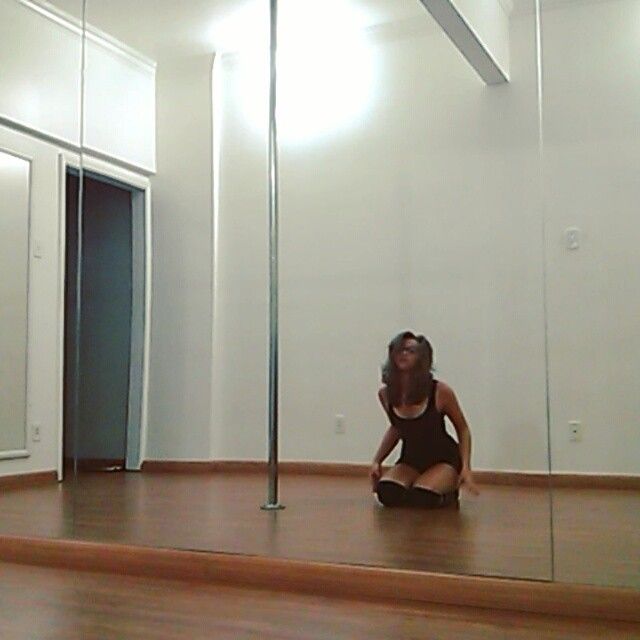 Any coach also once slid down from a pole, could not climb a pylon and was afraid to hang on one leg upside down.
Any coach also once slid down from a pole, could not climb a pylon and was afraid to hang on one leg upside down.
Clothing. For training, you need to take short shorts, a top or T-shirt, socks for warm-up and cool-down. Tricks in semi-sports are performed barefoot, and in exotics - in special shoes.
/sportstat/
What sports do Russians do
The more revealing the clothes, the better: you need a good grip on the pole, which comes at the expense of the skin.
Shoes. Exotic needs shoes - strips. It is not necessary to buy them right away, but you need to bring at least high heels with you. Sometimes in studios they are not allowed to dance in ordinary sandals, as they scratch the parquet. Or they ask you to seal the heel with adhesive tape - this can be found out in advance when signing up for classes.
Strips vary in height: from one, which has a heel height of 15 cm, platforms - 5 cm, to five, which has a heel height of 25 cm, platforms - 15 cm.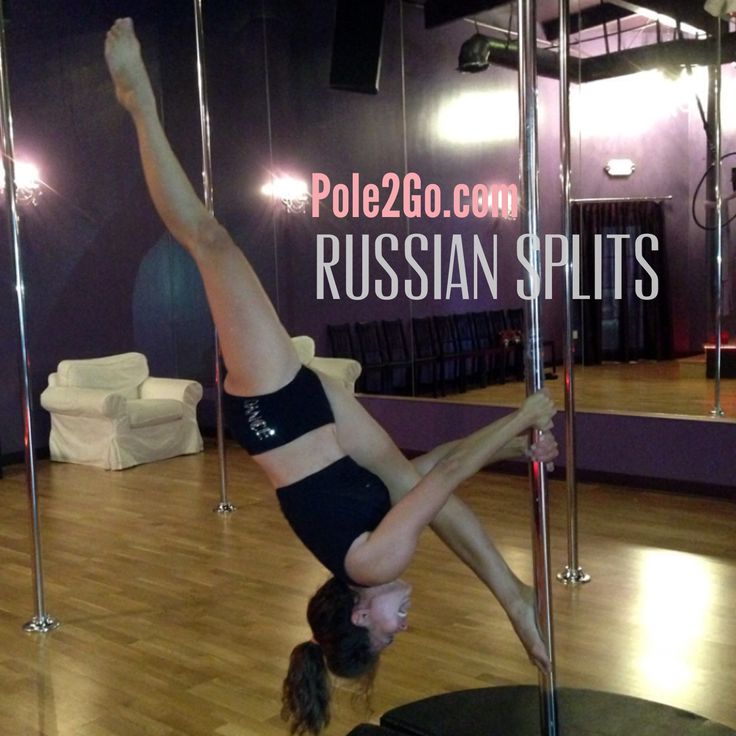 There are sandals, boots and even over the knee boots.
There are sandals, boots and even over the knee boots.
Beginners should start with ones. In the classes, you will not only have to learn how to stand and move on them, but also work out the elements on the bevels, that is, on the tips of the platform.
Knee pads. They are needed for exotic. There are many elements that must be performed while kneeling at the pylon. There are also tricks with jumping on your knees - here knee pads help soften the blows.
Bruise remedies. It is better to take care of possible bruises in advance - they can be in the most unexpected places. But this is temporary - as a rule, after two or three months, bruising is no longer a concern. Even at first, calluses may appear on the hands due to practicing the grip. Later, the skin will get used to it, and this problem will go away.
For accelerated healing of bruises, you can use ointments with heparin, and for the treatment of corns - a moisturizer and cream with urea in the composition.
Who shouldn't practice half-dance
People with severe chronic diseases, in particular, diseases of the heart, lungs, nervous system, kidneys, diabetes mellitus, should not practice half-dance. That is, for those for whom any intense physical activity and leg injuries can be dangerous.
When to consult a doctor before exercising - Mayo Clinic
In addition, classes may be contraindicated for people who have diseases of the spine and joints when they should not be overloaded, or severe skin diseases that may interfere with pole training or be aggravated by friction.
This sport is also not suitable for pregnant women, as during the performance of tricks you can fall or hit your stomach.
/sport-pregnancy/
How to stay fit and healthy during pregnancy
In other situations, everything is decided individually. I have low blood pressure and problems with the vestibular apparatus, but I have been doing pole sports for six years. In any case, you first need to consult a doctor, explain what the loads will be, so that he gives permission for classes. Usually, studios do not require a doctor's certificate, but I recommend that you insure yourself and take care of your health on your own.
I have low blood pressure and problems with the vestibular apparatus, but I have been doing pole sports for six years. In any case, you first need to consult a doctor, explain what the loads will be, so that he gives permission for classes. Usually, studios do not require a doctor's certificate, but I recommend that you insure yourself and take care of your health on your own.
Safety precautions for half-dance classes
Half-dance classes are classified as traumatic, so safety precautions must be observed. Each studio introduces the student to the signature requirements.
Leather. On the day of class, you can not use cream, lotion or body oil, go to the solarium or sunbathe - in this case, suntan creams or sunscreens are also applied. Any substances on the skin impair grip on the pole and increase the risk of slipping off the pole.
5 frequent injuries during solo sports
Jewelry. They must be left at home - they will interfere. For safety reasons, the coach must ask to remove all rings, earrings, beads, chains, bracelets, sharp hairpins and piercings.
For safety reasons, the coach must ask to remove all rings, earrings, beads, chains, bracelets, sharp hairpins and piercings.
Hairstyle. For semi-sports, it is better to collect hair, as it will interfere, and can also get tangled behind the pole.
For example, at one performance, my student's hair got caught in the bottom of the pole. Since she was twisting upside down, her hair was wound and caught. She was not injured, but she had to hang upside down while we pulled her hair out.
But on exotics, hair is usually left loose, because it is used for dancing: they twist or wave their heads, playfully throw their hair back with their hands.
Food. The last meal should be approximately two hours before training. Otherwise, twists on the pylon can make you feel sick.
Behavior in class. You can start training only after a warm-up, perform elements on mats and with a coach's insurance. You can’t jump off the pylon, if it’s not provided for by the trick, it’s unacceptable to relax the holding muscles - you can slide off the pylon, dropping onto your shoulders or forearms.
When performing tricks, it is important to keep a distance between yourself and other participants. In exotic classes, you need to work out the trick first with bare feet, and only then in strips.
What kind of injuries can you get during half-dance lessons?
Half-dance lessons require attention and concentration. There were cases when the dancers spun strongly, flew off the pylon and got a fracture. Sometimes equipment failed: it was not installed securely enough or poorly secured.
The most common and minor injuries that you can get in class are bruises or abrasions from hooks and hangs. At the beginning of training, until the skin is used to it, they will occur much more often. I have sensitive skin, so even after a few years, bruising periodically appeared.
/list/sports-health/
12 important questions for sports doctor Artem Ryzhenko
There is a high load on the joints and ligaments during the classes.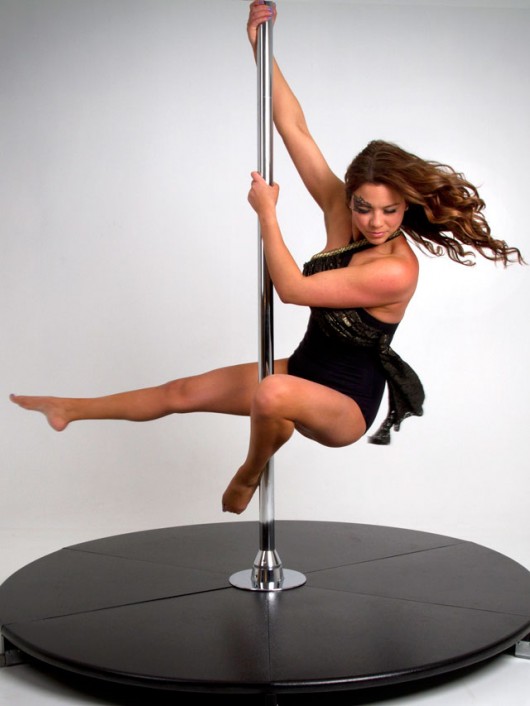 For example, when performing some elements, the arms should be straight - in fact, the emphasis is on the wrist. If this causes discomfort, wristbands or elastic bandages can be used.
For example, when performing some elements, the arms should be straight - in fact, the emphasis is on the wrist. If this causes discomfort, wristbands or elastic bandages can be used.
Six years later, I had a problem with the wrist of my left supporting hand - I always focused on it for racks and other elements.
It is very important to control your feelings: there should be no pain. If something hurts after completing the element, you need to rest. If the situation persists, you should consult a doctor.
And if a sprain or other minor injury occurs during the session, the training must be temporarily stopped. Until the body recovers, loading on the pylon is prohibited.
To avoid a fracture, it is important to follow safety precautions. The main thing is to never do tricks without mats and not let go of your arms and legs if the clutch has not happened. When it is clear that you are not holding on to the pole upside down, you need to tilt your head to your chest and slide down the pole to the floor on your shoulders.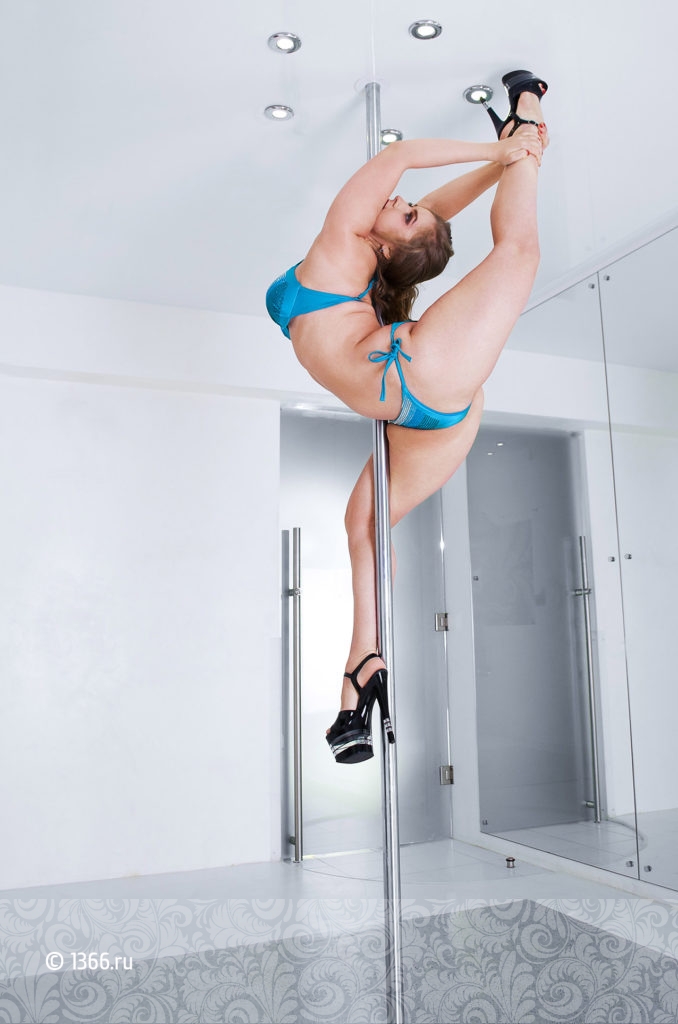 You should never tilt your head back to your back, so as not to fall in this position and injure your neck.
You should never tilt your head back to your back, so as not to fall in this position and injure your neck.
How to choose a pole dance school and coach
Equipment. It is necessary to check if there are mats and ask how the poles are fixed, what company the pylons are installed. The highest quality ones are from Pole4You. Your health and life depend on it.
Teacher training. It is important whether the studio coaches have certificates confirming the right to teach half-dance. Otherwise, they may not properly apply the load, causing injury.
/list/dance-schools/
From waltz to bachata: where they will learn to dance in Moscow
It is necessary that the coach learn the methods of teaching half-dance, go through theory and practice, pass tests and exams. Training cannot be less than 96 hours, because otherwise you cannot master the program.
Certificates are issued by half-dance studios with titled teachers and extensive experience.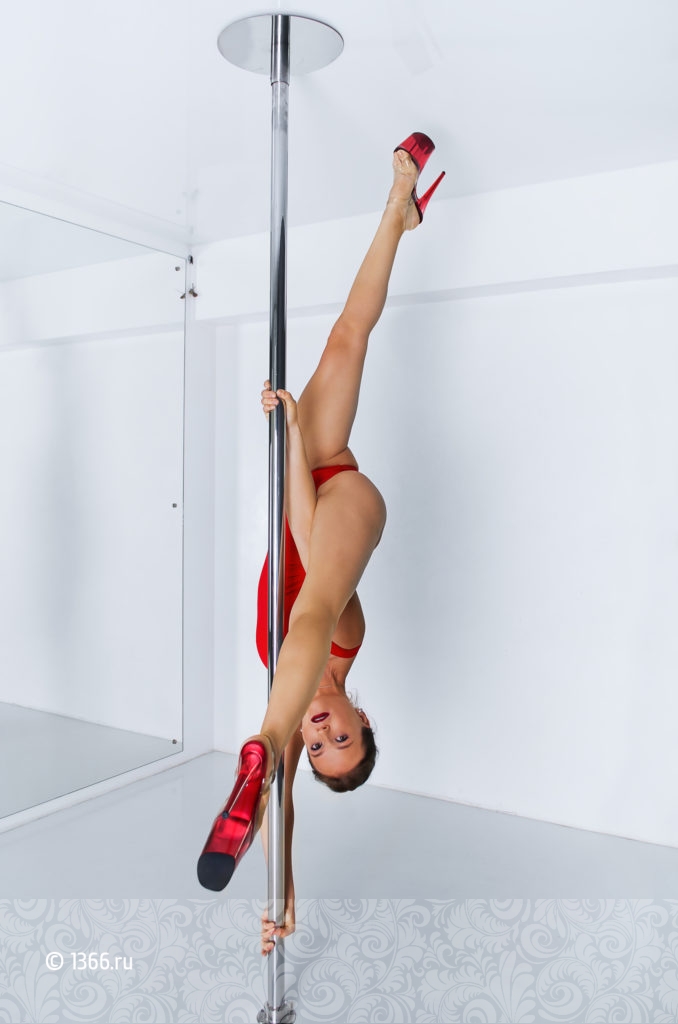 Typically, such organizations belong to a pol-dance federation or represent it themselves.
Typically, such organizations belong to a pol-dance federation or represent it themselves.
Competitions. It is important what competitions teachers and students of the studio take part in and how often: if the school is active in the outside world, then it will be more interesting to study there.
Number of students per pylon. There should not be too many students in groups - a maximum of two people per pylon. Otherwise, there will be no time to practice tricks.
First conversation with the trainer. The teacher needs to know about the physical condition, diseases and contraindications. You must be told what you can and cannot do in class, and you must sign an agreement with the safety rules.
Communication with the trainer. It depends on him what mood the student is in, how he progresses, what results he achieves. You should be comfortable with the coach. If this is not the case, you need to change the coach, otherwise effective training will not work.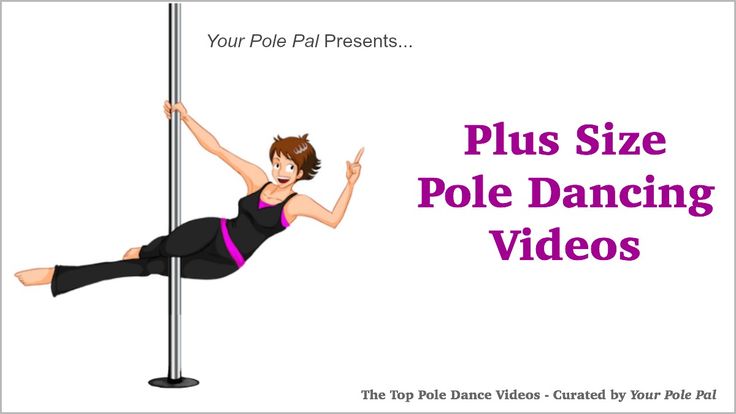
Coach qualification. He must have completed half-dance courses. It is also worth asking about experience: how many years he has been teaching, what successes his students have. It is good if in the past the coach was involved in professional sports or dancing, usually in this case the quality of teaching is higher.
It is also important how clearly the coach explains the technique of performing tricks and how he monitors safety: does he insure each student, does he require the use of a mat.
How much does it cost to do half-dance
Regular lessons. Usually dance studios offer several subscriptions to choose from: 8, 12, 16 group lessons. It makes no sense to go to training less than twice a week, that is, you need at least eight classes a month.
To practice semi-sports, you will need to spend money on a uniform and a subscription. Exotic half-dance requires a lot of money: you will also have to buy special shoes and knee pads. Then you will only need to pay for a subscription to the studio and change clothes and shoes as they wear out.
Then you will only need to pay for a subscription to the studio and change clothes and shoes as they wear out.
/list/hochu-mogu/
8 extreme hobbies that cost people a lot of money
Half-sport classes in the first month cost from 6500 R
| Subscription for 8 lessons | 2500-5000 R |
| Shape: top and shorts | 3500 R |
| Socks | 500 R |
Subscription for 8 lessons
2500-5000 Р
Form: top and shorts
3500 R
Socks
500 R
Semi-exotic classes in the first month cost from 13 000 R
| Strips | 5000 R |
| Subscription for 8 lessons | 2500-5000 R |
| Shape: top and shorts | 3500 R |
| Knee pads | 2000 R |
Strips
5000 R
Subscription for 8 lessons
2500-5000 R
Uniform: top and shorts
3500 R
Knee pads
2000 R
Participation in competition costs - 9018 For example, the participation fee starts from 1000 R.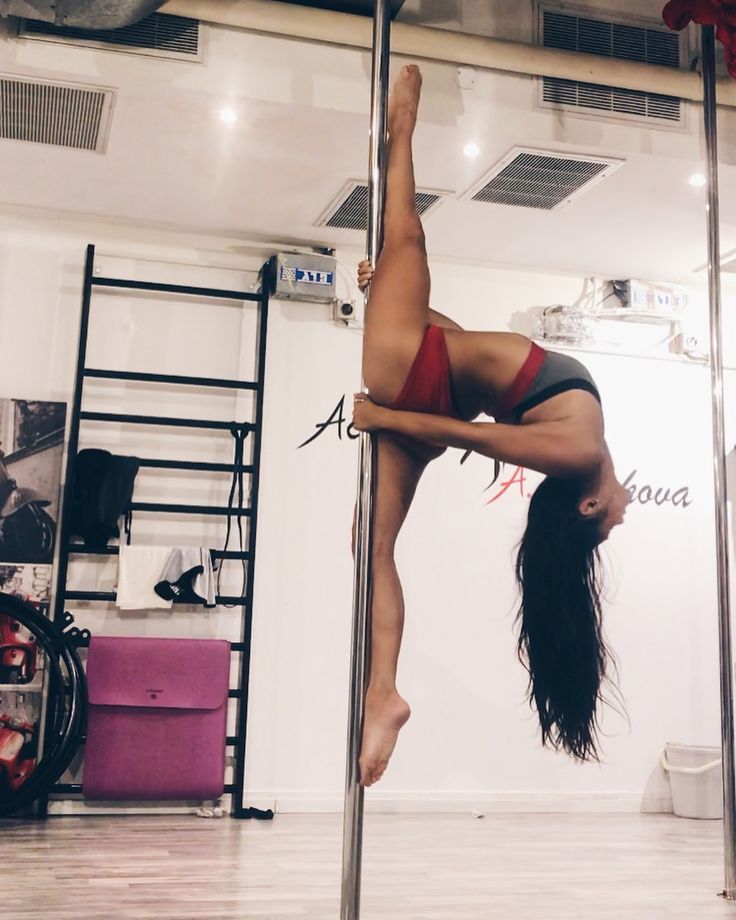 You also need to sew or buy a special suit - this is at least 3000 R. New strips for competitions are usually not bought. The dancer gets used to those in which he trains, in new ones there is a higher risk of falling.
You also need to sew or buy a special suit - this is at least 3000 R. New strips for competitions are usually not bought. The dancer gets used to those in which he trains, in new ones there is a higher risk of falling.
You also need to pay for individual lessons with a trainer to work out the number and rent the studio hall for independent training - they are needed to consolidate the result.
A personal lesson with a trainer costs an average of 1500 R, but its price can reach up to 3000 R. The number of lessons depends on the competitions themselves, the level of training, the complexity of the number. The minimum number of trainings for setting a number is four. Renting a studio for self-training will cost about 5,000 R for 10 times.
Preparation for pole dance competitions will cost about 15,000 R
| 4 personal lessons with a trainer | 6000 Р |
| Room rental for 10 self-study | 5000 R |
| Special suit | 3000 R |
| Participation fee | 1000 R |
4 Personal classes with a coach
6000 R
Renting of the hall for 10 independent classes
5000 R
Special costume
9000 3000 3000 RFund for participation
1000 R
Remember
- Pole dance is a pole dance that combines elements of choreography, gymnastics and acrobatics.
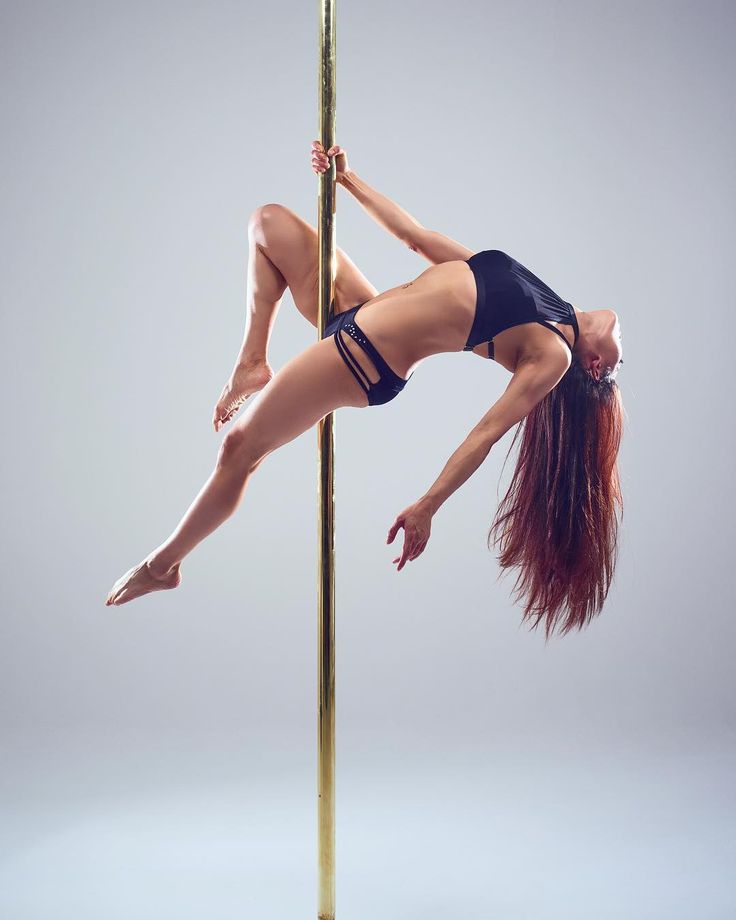
- All directions of half-dance are intertwined with each other. You can't dance without tricks or choreography.
- One session actually replaces a circuit training, where exercises for different muscle groups are repeated several times - the same number of calories can be spent. In addition, classes on the pole train the skill of controlling the whole body.
- You can practice from scratch without any preparation. Usually, students are divided into groups of beginners and those who have been studying for a long time.
- At the beginning of each workout, a mandatory warm-up, and after it - stretching or exercises without a pole.
- To start doing semi-sports, you only need a uniform, and for exotic you also need special shoes and knee pads.
- Training is contraindicated for people with severe chronic diseases and pregnant women.
- Pole dance is classified as a traumatic sport, so it is important to follow the safety precautions that you should be introduced to in the studio.

- When choosing, you should pay attention to the quality of equipment in the studio, the qualifications of the coach and comfort while communicating with him.
Health news, interviews with doctors and instructions for patients in our telegram channel. Subscribe to keep abreast of what is happening: @t_zdorov.
Pole dance lessons. Questions and Answers
On this page we have collected the most typical questions that our future students ask us when they are going to master the direction of Pole Dance from scratch. If you are planning to start learning pole dance, pole sport or exotic pole dance, attend stretching classes, be sure to read this material, it will help you prepare for classes and create the right mood. Also, you might be interested to know that many beginners have the same questions...
- I have no athletic or dance training. Can I learn something?
-
You definitely can! Over the years of our school's existence (since 2008), we have trained almost 10,000 graduates, and approximately 80% of them came to us without ever doing anything before.
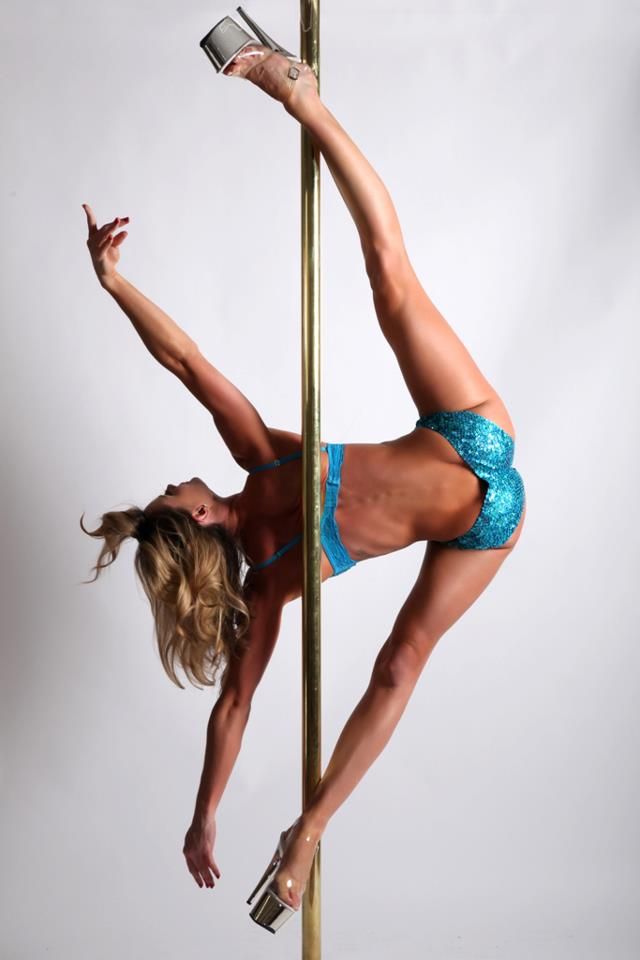 Of course, it will be easier for you if you lead an active lifestyle, work out in a fitness club - but even if this is not the case, believe me: Everything is in your hands, there would be a desire!
Of course, it will be easier for you if you lead an active lifestyle, work out in a fitness club - but even if this is not the case, believe me: Everything is in your hands, there would be a desire! Pole Dance is a very intense sport and dance. Your muscles will get stronger faster than you think. And with regular classes twice a week, in a couple of months you will have something to demonstrate to your friends: there are a lot of simple but beautiful elements in pole dancing that are accessible to the average person.
- What to bring to class, what kind of clothes?
-
Dress code depends on which direction you choose. There are a few basic rules that will help you feel more comfortable during your workout, but we leave the rest up to you, we don't have a strict dress code!
1) To work with the pole (pole dance, pole sport, exotic) your legs from the middle of the thigh and below must be open.
 This is necessary to stay on the pylon - any fabric will slide. You will need shorts, preferably made of stretch fabric, without any metal rivets or decorative elements (any fittings, especially metal ones, damage the poles and pose a danger during the execution of the elements). Often, students use shorts made of dense opaque fabric from the “seamless underwear” category, which can be bought at any lingerie store, as shorts.
This is necessary to stay on the pylon - any fabric will slide. You will need shorts, preferably made of stretch fabric, without any metal rivets or decorative elements (any fittings, especially metal ones, damage the poles and pose a danger during the execution of the elements). Often, students use shorts made of dense opaque fabric from the “seamless underwear” category, which can be bought at any lingerie store, as shorts. It is also desirable to choose a top that is tight and reveals the maximum area of your body - it can be a knitted T-shirt or an elastic top that opens the stomach. None of your clothes should hang loose or hinder your movements in any way. Any “extra” fabric is an obstacle between your body and the smooth metal surface of the pole, creating a completely unnecessary sliding effect in this sport and increasing the risk of injury.
2) When training stripplastik (stripdance) , as well as Dance-To-Slim (Dance and Slim) the only requirement is that the clothes be comfortable and tight, allowing you and your choreographer to control the correct execution of your dance movements.
 Choose tight sports trousers or leggings, and to them - a T-shirt or top made of thin natural fabric. Remember that baggy and layered clothes, all types of trousers that hip-hop, ragga, etc. are so fond of, do not at all correspond to the energy of the strip-plastic / strip-dance style and are unlikely to help you tune in in the right way.
Choose tight sports trousers or leggings, and to them - a T-shirt or top made of thin natural fabric. Remember that baggy and layered clothes, all types of trousers that hip-hop, ragga, etc. are so fond of, do not at all correspond to the energy of the strip-plastic / strip-dance style and are unlikely to help you tune in in the right way. 3) For stretching , any sportswear (tracksuit) is suitable, it is better to prefer sports trousers to shorts. Don't forget to take your running shoes with you, because stretching is always preceded by a good quality warm-up, and only then you can "relax" on the mat.
4) For the warm-up that starts any dance session, you'll need a zip-up jersey sweatshirt or light tracksuit jacket to keep you comfortable until you warm up, especially if you're It's hot outside and the air conditioner is on. Also, to warm up, dancers often use leggings - usually woolen, slightly above the ankle or knee length, sometimes with a hole for the heel.
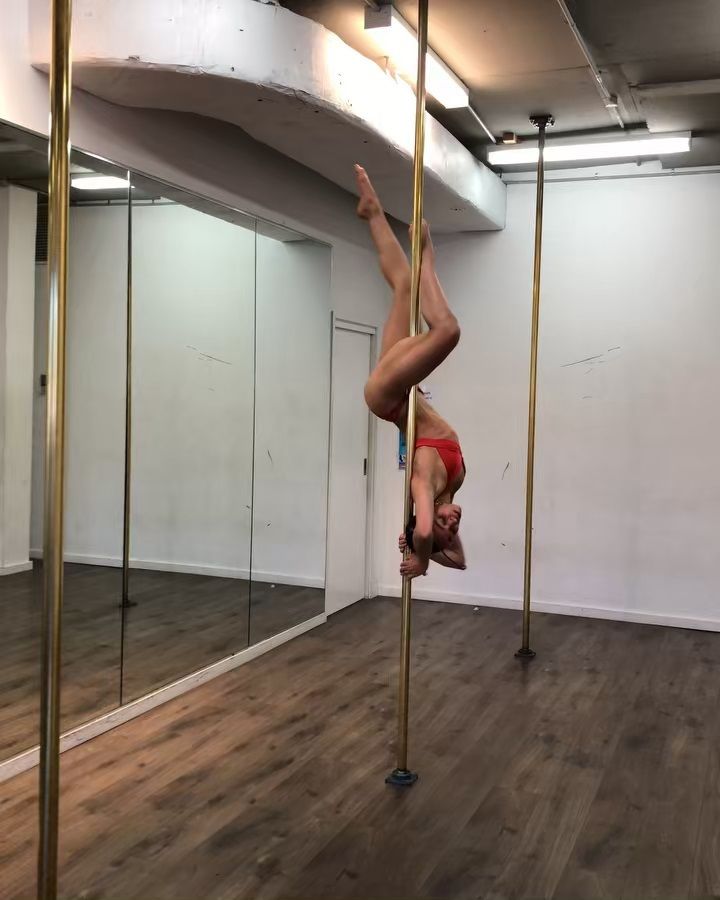
Shoes for training choose depending on what kind of training you are going to:
- Classic Pole Dance. You will need fabric ballet flats or jazz shoes; if not, just take a pair of socks with you. Some even experienced pole dancers prefer to perform and practice barefoot - and many beginners do the same. Sneakers are NOT suitable for this sport/dance as the foot is actively working in it.
- Pole Sport Acrobatics. Training is done barefoot. We take socks for a better warm-up at the beginning of the lesson, which makes training safer.
- Exotic Pole Dance. It is highly desirable to have special shoes “for striptease” with you - shoes with a high platform and equally high heels, the so-called “strips”. If they are not available, you can use shoes for ballroom dancing (for Latin) - heeled sandals. But, even if you don’t have suitable shoes with heels at all, come anyway, at first you can practice in socks, just the coach will remind you that you need to follow the technique of the foot in the dance.

- Dance-To-Slim dance directions, strip plastics, etc. Suitable for both lightweight cardio trainers and latin dance sandals.
- Stretching, Split Stretching. You need to bring running shoes to warm up and socks for stretching (working on the mat). Remember not to stretch on the mat while wearing sneakers - this is unhygienic, technically wrong (insufficient stretching of the ankle muscles) and leads to rapid wear of the mats.
5) You MUST REMOVE any metal jewelry (rings, bracelets, chains, piercings) during class. This will avoid the risk of injury to yourself during the execution of the elements, and will also protect our sports equipment - pylons - from damage. Fines are set for violation of this requirement in the studios.
- What (what type of dance) should I start with? Or maybe start with stretching lessons?..”
-
The answer to this question depends on what your GOALS are.
If the most important of them is to learn to DANCE, you can start with both classical Pole Dance and Exotic Pole Dance: they have about the same element base, for the first 2 months you will study the “ABC” of pole dance (twists, transitions , plasticity and the basics of parterre acrobatics).
 If during this time you realize that you are more interested in STUNTS AND ACROBATICS - welcome to Pole Sport, or you can stay within the Pole Dance style, but as your skill grows, you will learn more and more complex gymnastic elements. If you would just like to “DO SOMETHING”, especially without straining, but at the same time be in good shape; if you just need a healthy and healthy way to RELAX after a hard day's work - come to the stretch.
If during this time you realize that you are more interested in STUNTS AND ACROBATICS - welcome to Pole Sport, or you can stay within the Pole Dance style, but as your skill grows, you will learn more and more complex gymnastic elements. If you would just like to “DO SOMETHING”, especially without straining, but at the same time be in good shape; if you just need a healthy and healthy way to RELAX after a hard day's work - come to the stretch. If you want to have a BEAUTIFUL MUSCLE RELIEF, tighten problem areas, i.e. you need a complete analogue of the gym - Pole Dance and Pole Sport are equally suitable for you. If you need cardio loads, you want to LOSE WEIGHT - choose Exotic Pole Dance or Dance-To-Slim, as well as Flexibility and Strength. If you have been dreaming of TWINE since childhood, you want to be FLEXIBLE, then you have a direct road to Stretching classes.
“Start with stretching” – it is possible and necessary, it is another matter that this process is not fast and, moreover, has nothing to do with the ability to dance.
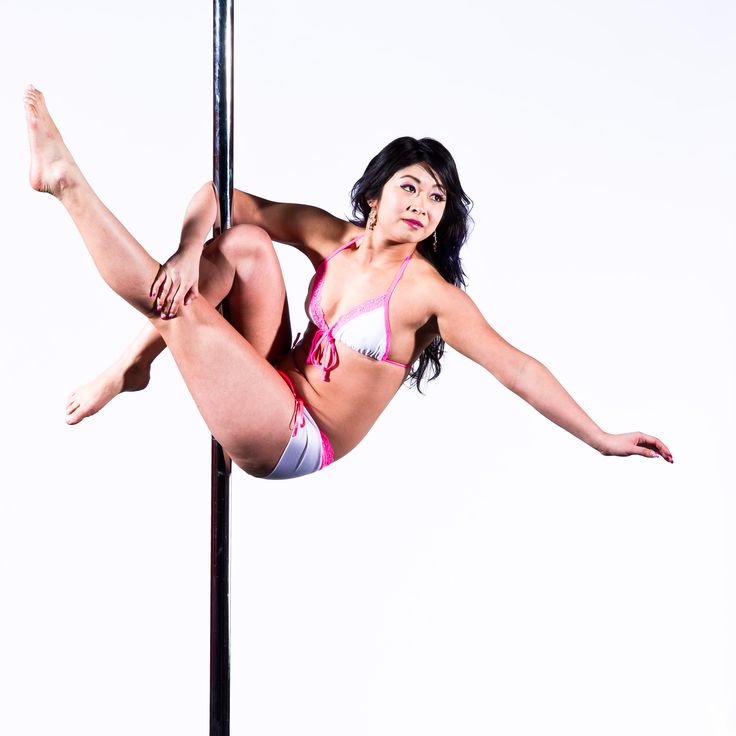 Of course, the presence of a twine will significantly decorate your pole dance, but it is hardly worth waiting 2-3 months until you have a twine if your soul asks for a dance here and now! Listen to yourself, be guided by your desires and feelings - and start with what your soul and body are drawn to.
Of course, the presence of a twine will significantly decorate your pole dance, but it is hardly worth waiting 2-3 months until you have a twine if your soul asks for a dance here and now! Listen to yourself, be guided by your desires and feelings - and start with what your soul and body are drawn to. If you have the opportunity to do both pole dance and stretching in parallel, this is the best option, which gives the fastest progress. In any case, for each pole dance subscription you buy, we will give you a FREE STRETCHING LESSON so that you have the opportunity to try this direction and take a dozen or two effective techniques for self-stretching into your piggy bank.
- Do you have groups for beginners?
-
Before answering this question, let's think: who are beginners? These are people just taking their first steps in this type of dance is - and this is the only thing that unites them. Indeed, among them there are those who, in childhood, were engaged, for example, in choreography or folk dances, but then abandoned classes for many years; there are graduates of a music school who have an excellent ear for music, but are completely unable to move; there are naturally flexible and plastic, and there are those who consider themselves a "real tree"; there are physically strong (again, thanks to good heredity) and there are fragile, weak, with insufficient muscle mass .
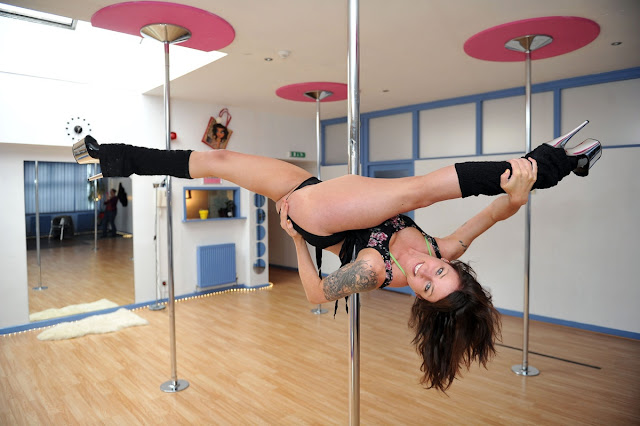 .. Each of the so-called "beginners" will have their own, absolutely UNIQUE LEARNING PACE and their own, completely different from other members of the group, difficulties and problems in the learning process. Because each of us is a unique individual. And if you look closely at any artificially assembled "beginning" group, then in fact it will turn out to be completely motley ...
.. Each of the so-called "beginners" will have their own, absolutely UNIQUE LEARNING PACE and their own, completely different from other members of the group, difficulties and problems in the learning process. Because each of us is a unique individual. And if you look closely at any artificially assembled "beginning" group, then in fact it will turn out to be completely motley ... The only optimal way to solve this problem is an INDIVIDUAL APPROACH OF THE TEACHER, i.e. in the literal sense, the number of times that he approaches each student during the lesson in order to personally explain the material to her. And here the term of your training ceases to be important and comes to the fore Your real level of training , which may not correspond to the “arithmetic mean” of the group, differing both up and down.
And when learning pole dance, it is of utmost importance that you have a PERSONAL PYLON throughout the entire lesson. Only in this case, you have the opportunity to learn at your own pace and do not depend on the level of the other members of the group, who can progress much more slowly or, conversely, faster than you only because of their genetic characteristics.
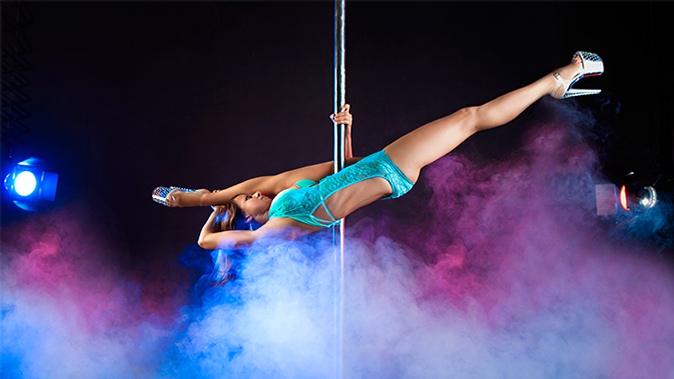
Therefore, the best dance schools have long abandoned the outdated division of groups into “beginners” and “advanced”, invented in order to simplify the work of the coach, and practice a more competent and modern principle: “Teaching in small (small) groups using an individual approach teacher".
- I am __ years old. Is it too late to start studying at your school? What are the age restrictions?
-
Answer: NEVER LATE!!!
Firstly: Pole Dance is basically a sport only for adults, from 18 years old, people, due to its technical and ethical features.
Secondly: IN THE PART CONCERNING THE EXOTIC DIRECTION - we position ourselves as a school for adult girls and women - adults so that they realize, feel and accept their femininity. This realization can come to us at 18 or 45 – and that is why it is never too late to start working on discovering your feminine essence and allowing it to bloom. Dance practices, which are based on erotic, seductive overtones, have long been considered one of the fastest and most effective ways to establish contact with your “inner goddess”, achieve harmony with yourself and, as a result, harmonize your relationships with men.
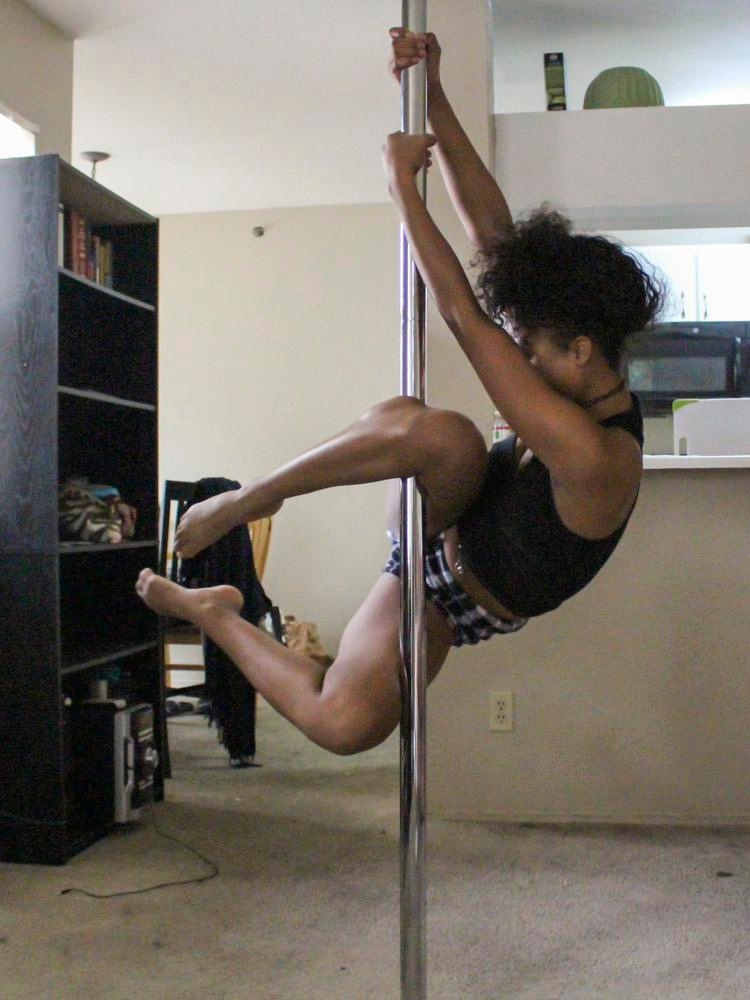 Our students all unanimously say that after the start of classes at our School, their personal life has changed significantly for the better: someone got married successfully, someone managed to bring relations with an existing partner to a new level (somehow easily and imperceptibly!), and someone just felt so free and attractive person that he lives and enjoys the attention of numerous fans, not thinking about tomorrow. There's also a lot of positive feedback about the "amazing" career advancement, the change in attitude from management and male co-workers... There are a few unexpected romances with the boss, but that's another topic for discussion. And your age is not a topic for discussion at all. In any case, she has nothing to do with dancing.
Our students all unanimously say that after the start of classes at our School, their personal life has changed significantly for the better: someone got married successfully, someone managed to bring relations with an existing partner to a new level (somehow easily and imperceptibly!), and someone just felt so free and attractive person that he lives and enjoys the attention of numerous fans, not thinking about tomorrow. There's also a lot of positive feedback about the "amazing" career advancement, the change in attitude from management and male co-workers... There are a few unexpected romances with the boss, but that's another topic for discussion. And your age is not a topic for discussion at all. In any case, she has nothing to do with dancing. - Can I do Pole Dance if I am overweight?
-
Yes, you can. In our groups, not only “slender girls” and “phytonies” are involved, plump girls often come - often they are very plastic, naturally move well.
The pylon is able to withstand almost ANY WEIGHT of a person practicing on it, from this point of view there is no danger.
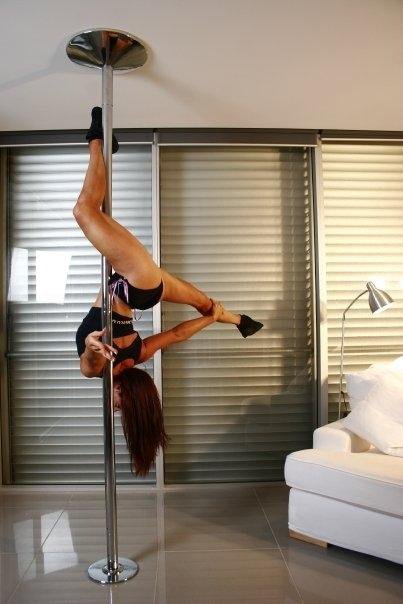
If you follow the usual principles of proper nutrition and regular pole training, excess weight, as a rule, gradually disappears.
It should be taken into account that if the weight is very large, intense physical activity, including pole sports, may be contraindicated. It is necessary to protect the cardiovascular system, spine and knees. Therefore, if this is not just fullness, but a really serious problem (obesity), you need to consult a doctor and, possibly, lose some of the weight before starting classes.
- Is it possible to practice Pole Dance if there are problems with the spine (scoliosis, osteochondrosis, etc.)?
-
There is no definite answer. In each specific case, it is necessary to obtain a doctor's permission to practice pole sports, taking into account the condition of the spine. Pole dance involves increased stress on the back, chronic diseases can worsen.
At the same time, pole dancing strengthens the muscular corset well, which allows you to get rid of or prevent a number of possible problems with the spine - for example, prepare your back for subsequent increased stress during pregnancy and after childbirth.
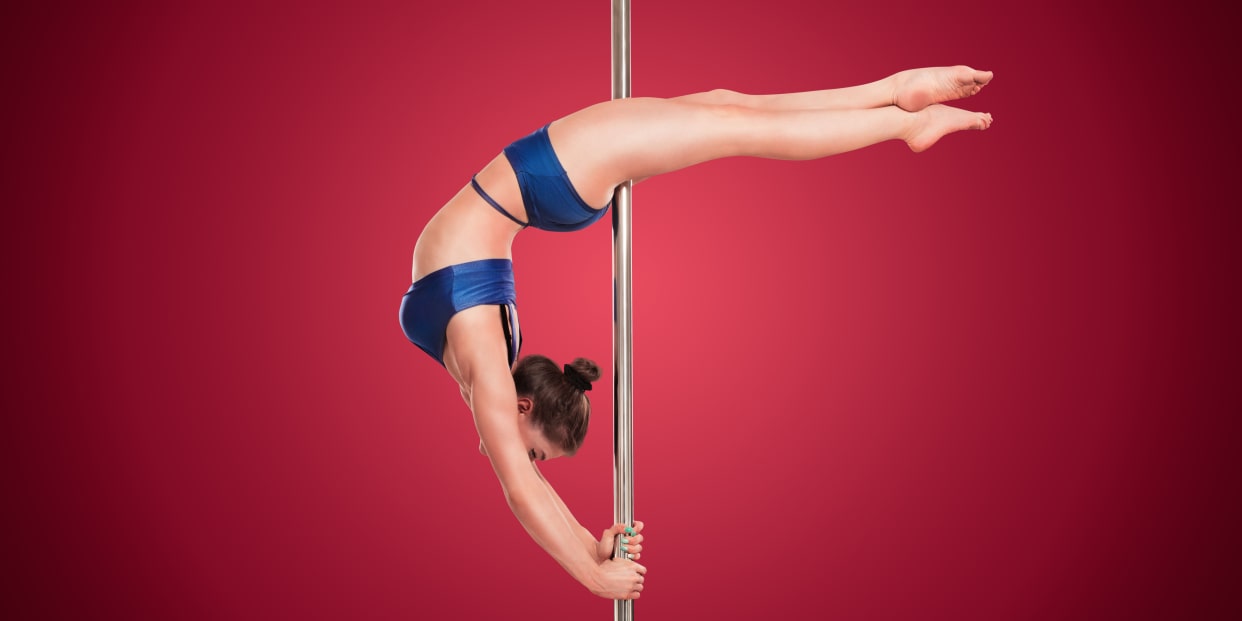
- Do I need to take various special equipment with me to Pole Dance - pole gloves, chalk, wax and other means to grip the pole?
-
No, you don't! Better take a good mood and positive attitude with you ;)
We want our students to feel as confident as possible on the pole - regardless of whether they took gloves with them or left them at home. Any aids to keep yourself on the pylon deprive you of self-confidence, delay the onset of your success. Your palms must become calloused in order for you to become subject to serious trick elements.
Wax, chalk and other adhesives were originally developed for professional athletes who perform life-threatening stunts at high altitudes without insurance. Tricks in which it is really difficult or almost impossible to keep yourself on the pole without aids. Therefore, it looks ridiculous and ridiculous when a novice student is offered to use the means of coupling on a standard pylon to perform a simple element like a “slingshot”.
